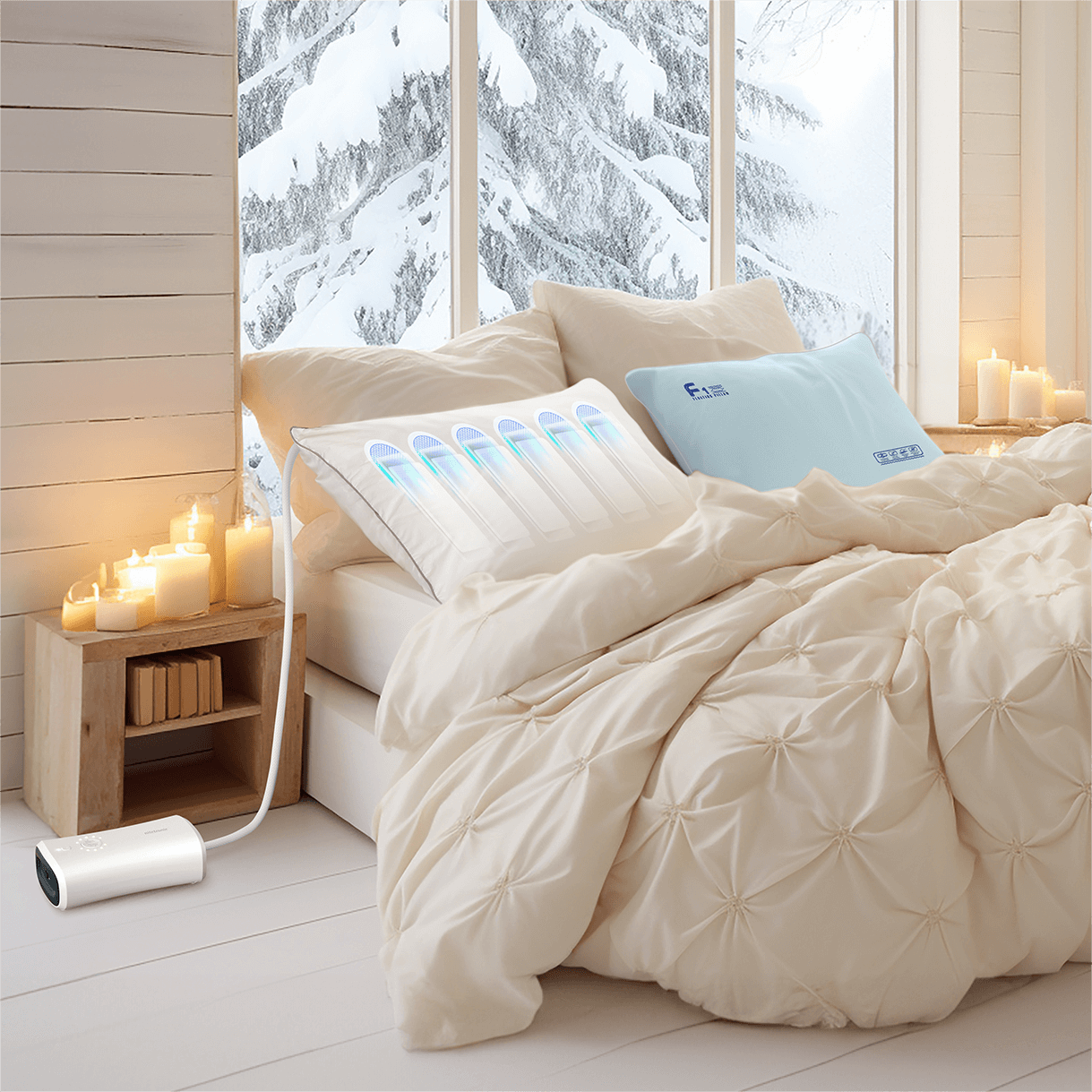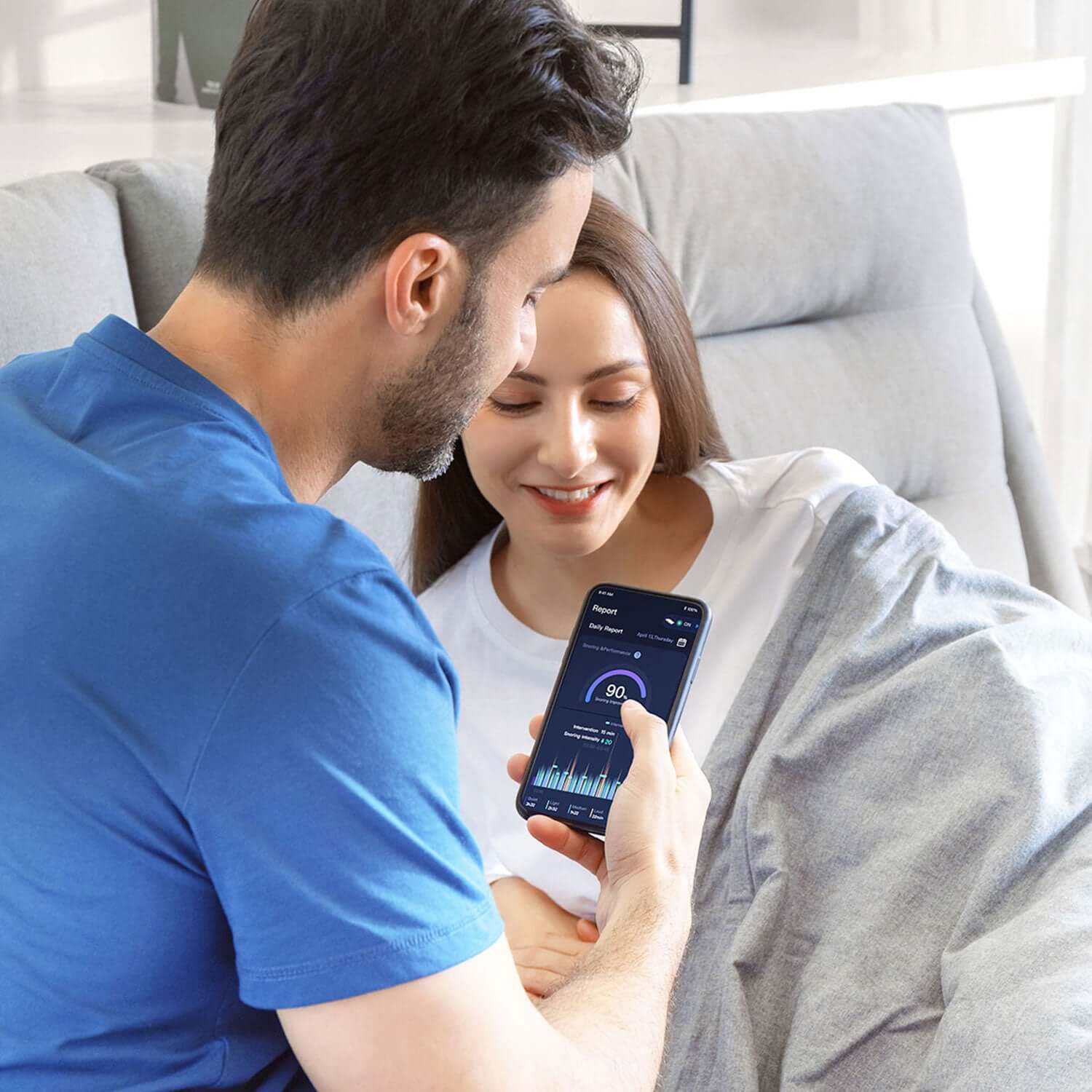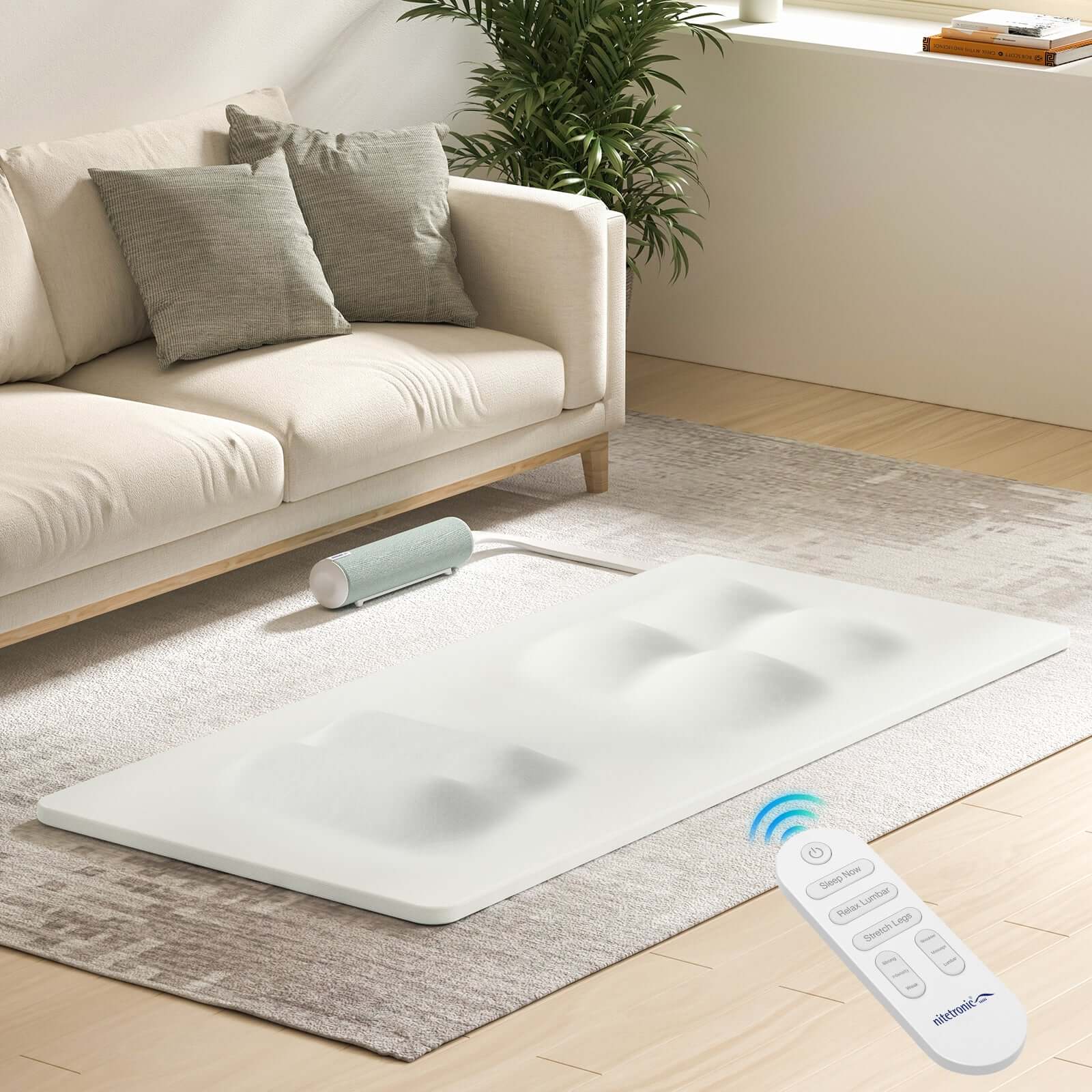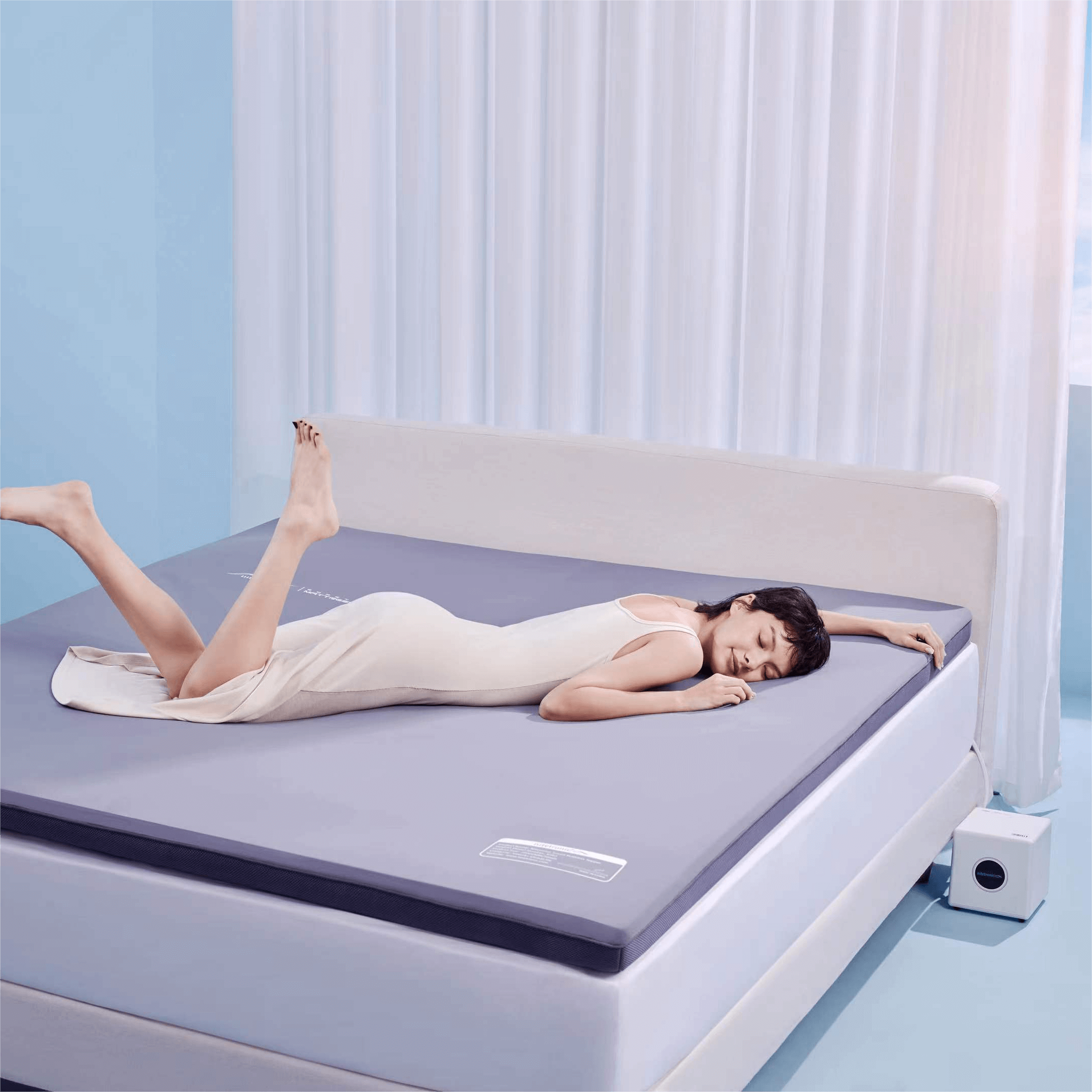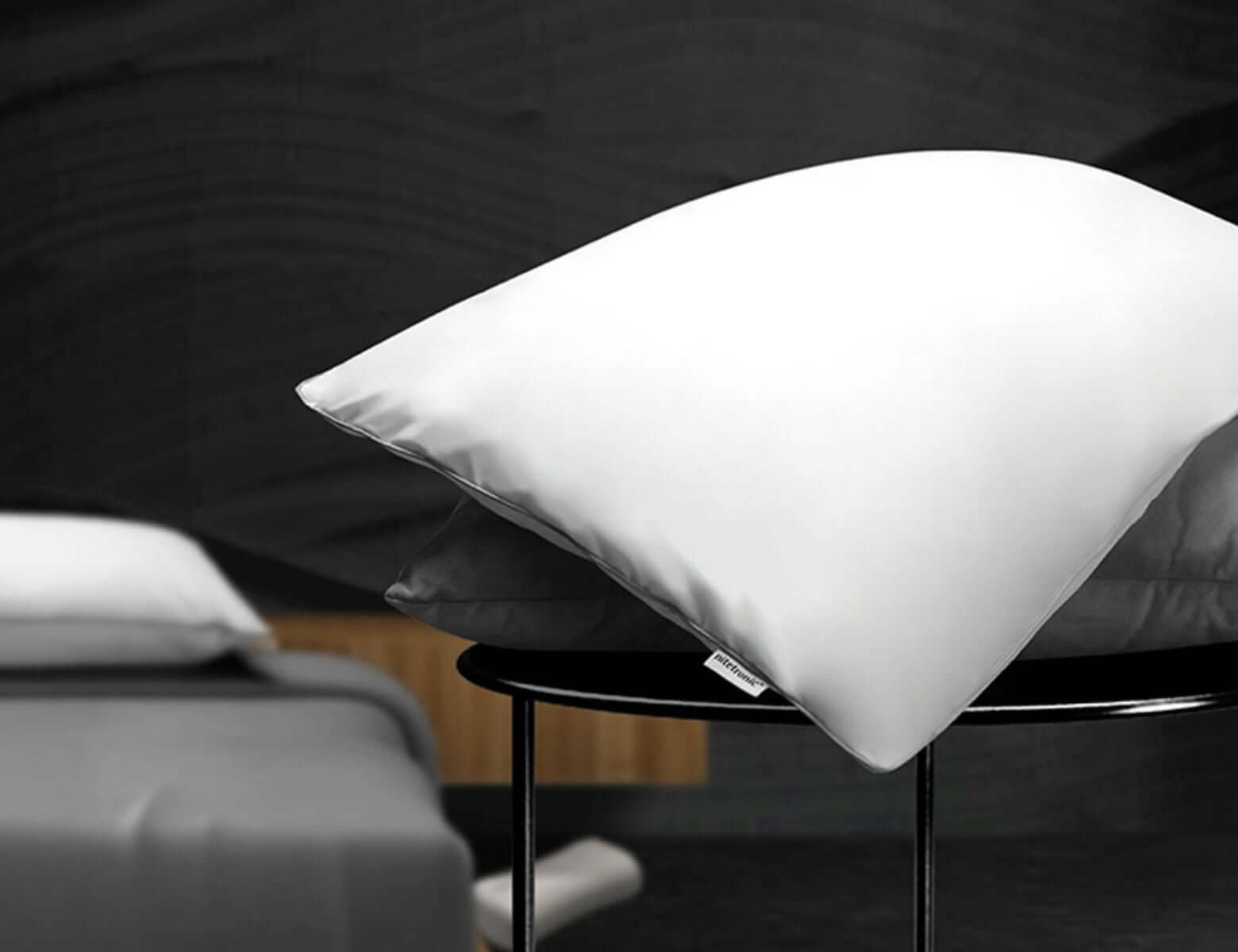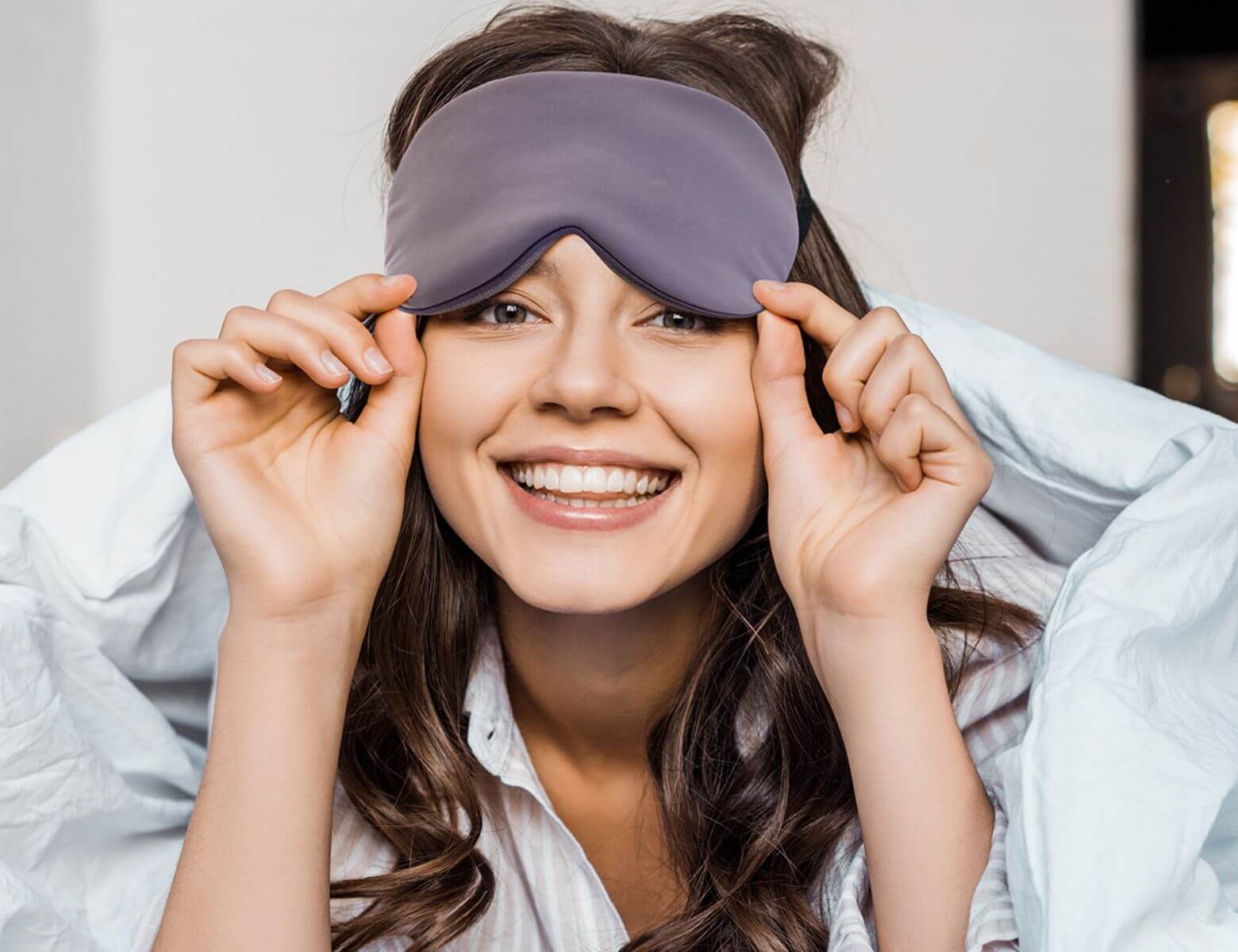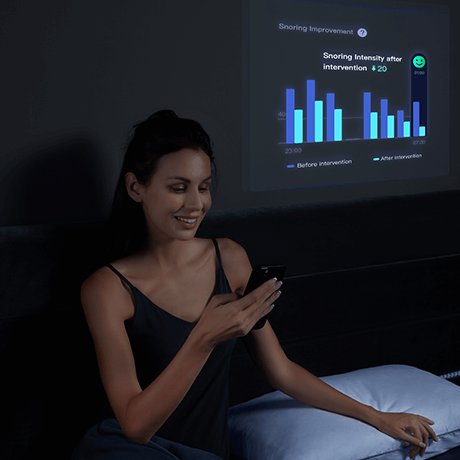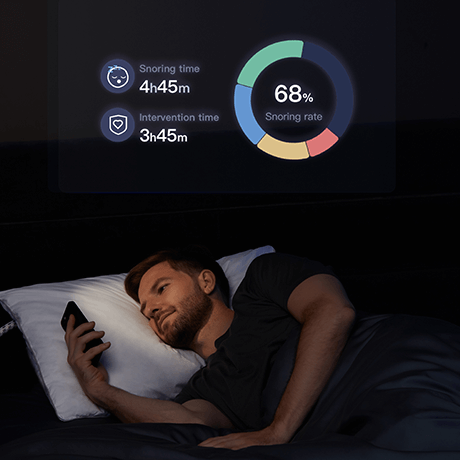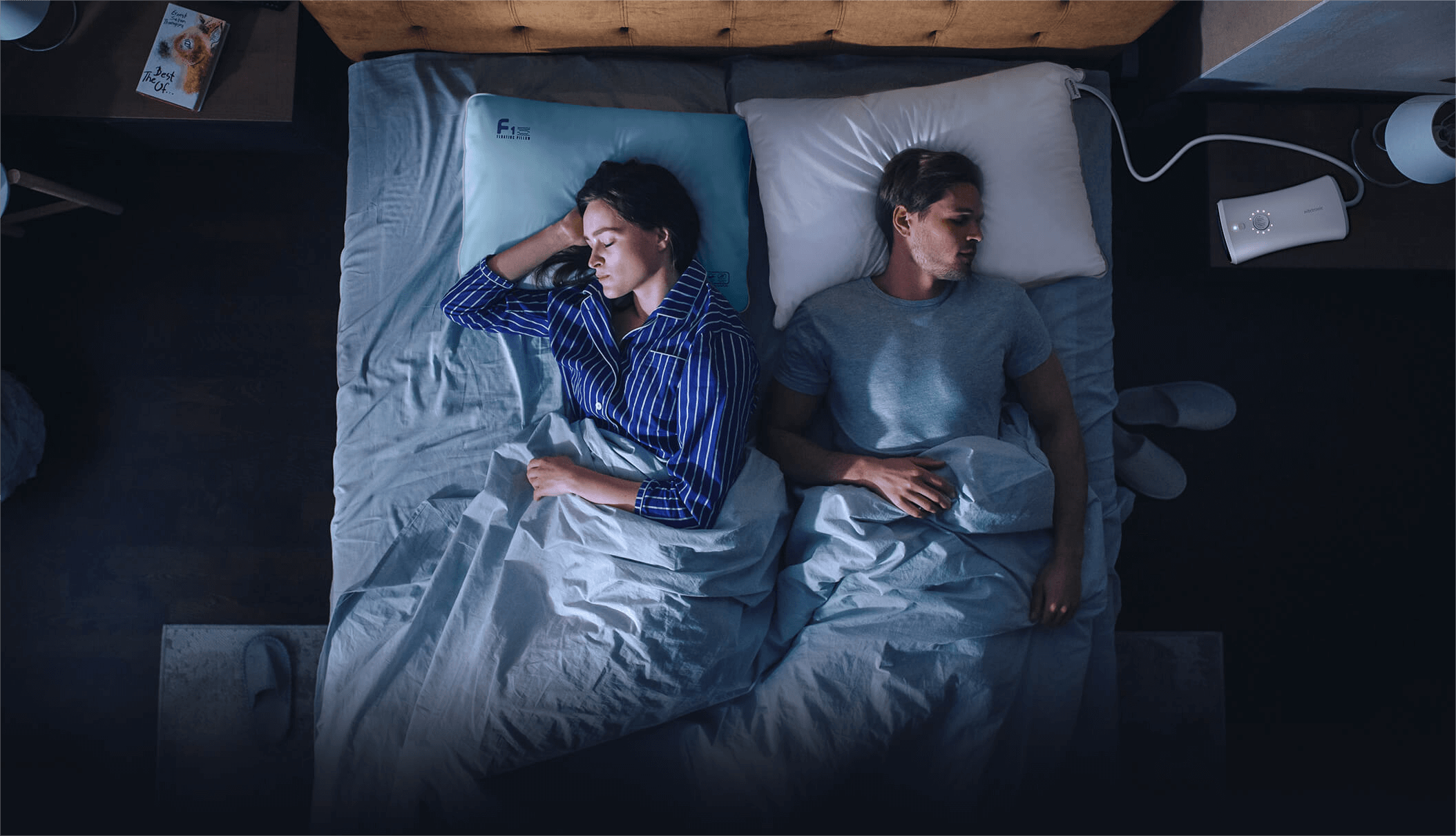Nitetronic Anti Snore Lab
Scientific research powering smarter snore relief.
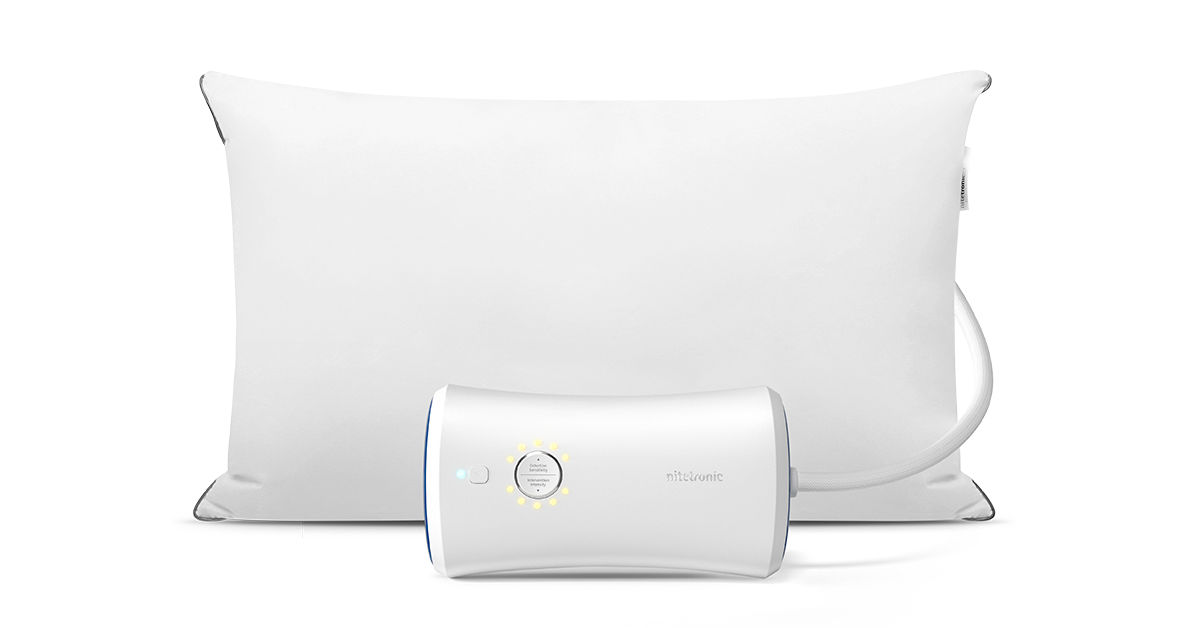
Smart Anti-Snore Pillow
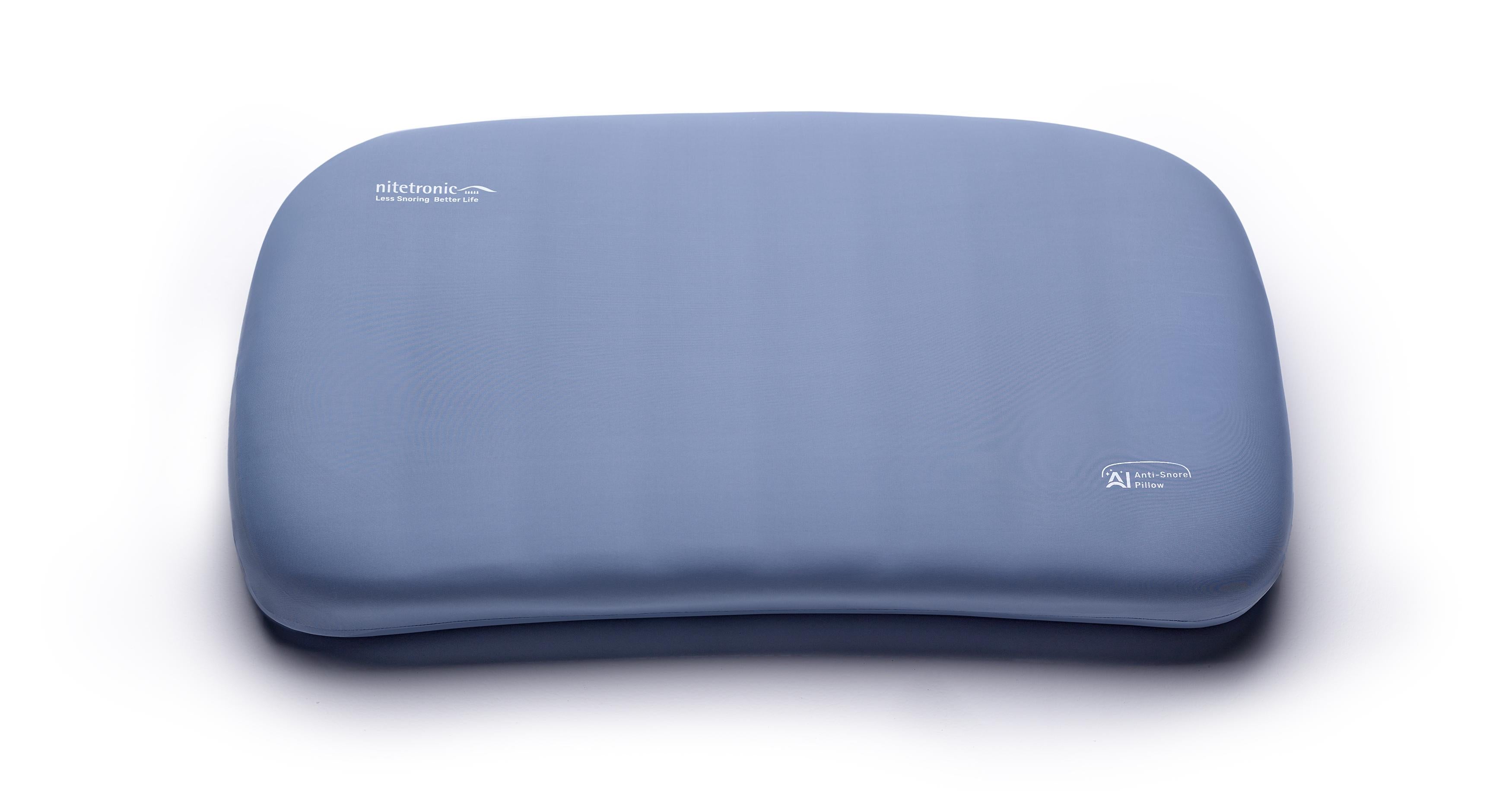
AI Anti-Snore Pillow
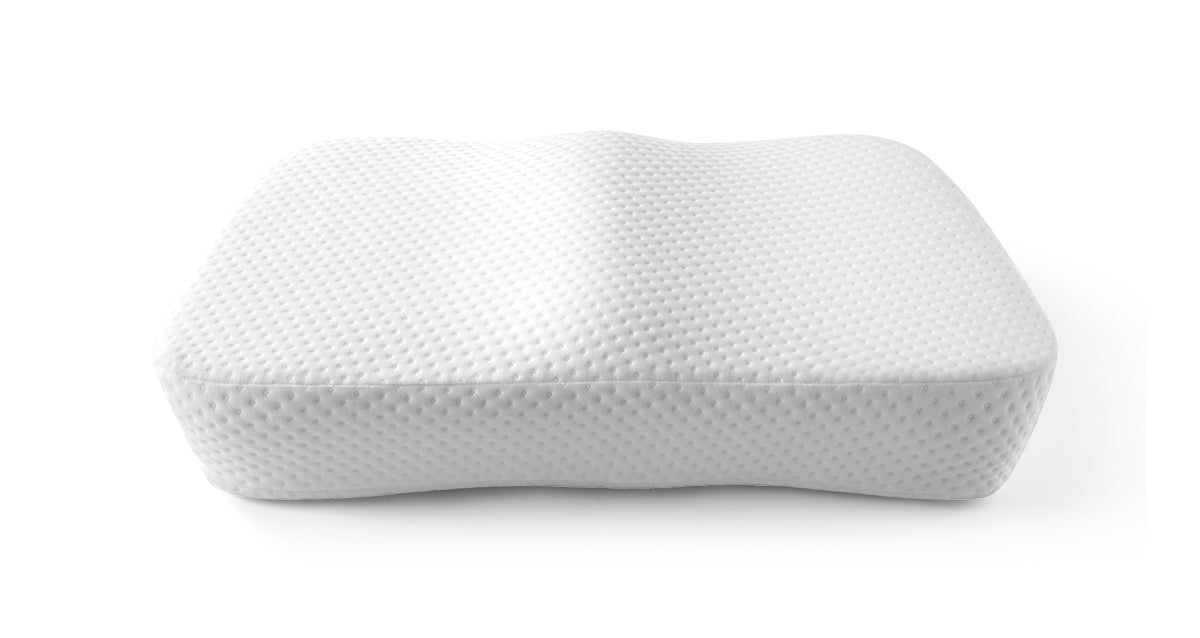
Side-Sleeping Anti-Snore Pillow
Why Snoring Occurs?
Johns Hopkins Medicine estimates nearly half of the population snore occasionally, while 25% snore regularly. When we sleep, our laryngeal muscles relax and the soft tissues in the upper airway collapse due to gravity, causing an obstruction. This obstruction is especially severe when lying down, resulting in snoring as airflow struggles through the blocked airway.
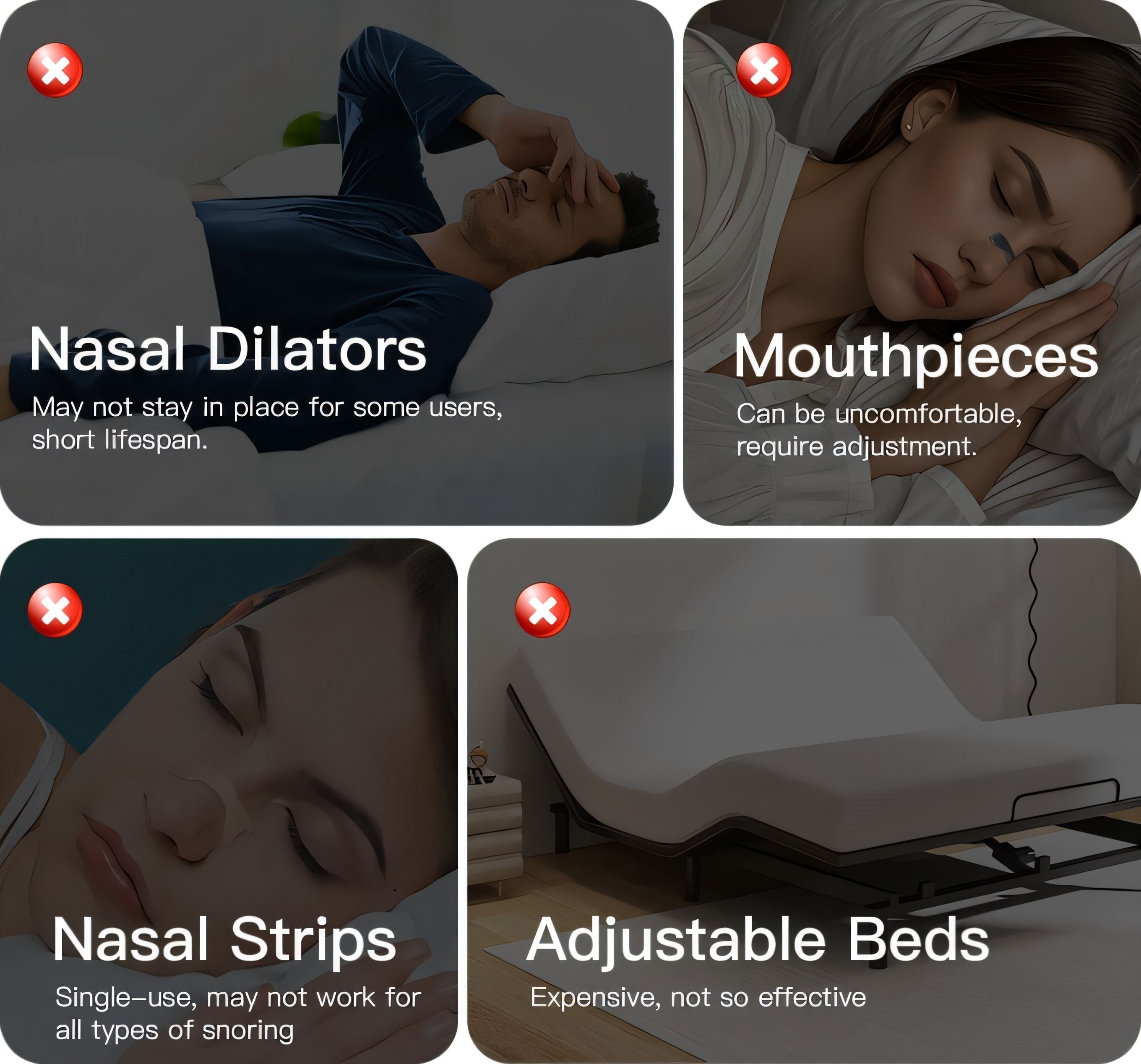
Snoring is more than a sign of poor sleep quality; it is an independent risk factor for chronic diseases and may indicate Obstructive Sleep Apnea (OSA). It is common, affects sleep and causes daytime fatigue, while also impacting relationships and overall health.
Common attempts to eliminate the chance of snoring include anti-snoring month-piece, mouth strips, nasal dilators, and electronic stimulators, which areinvasivetools that contradictsleeping habits. They could create morediscomfortor incur additionaldamage.
Snoring is more than a sign of poor sleep quality; it is an independent risk factor for chronic diseases and may indicate Obstructive Sleep Apnea (OSA). It is common, affects sleep and causes daytime fatigue, while also impacting relationships and overall health.
Common attempts to eliminate the chance of snoring include anti-snoring month-piece, mouth strips, nasal dilators, and electronic stimulators, which areinvasivetools that contradictsleeping habits. They could create morediscomfortor incur additionaldamage.

And turning the snorer’s head to the side is the best way to reduce the compression on the airway, which in turn stops snoring.
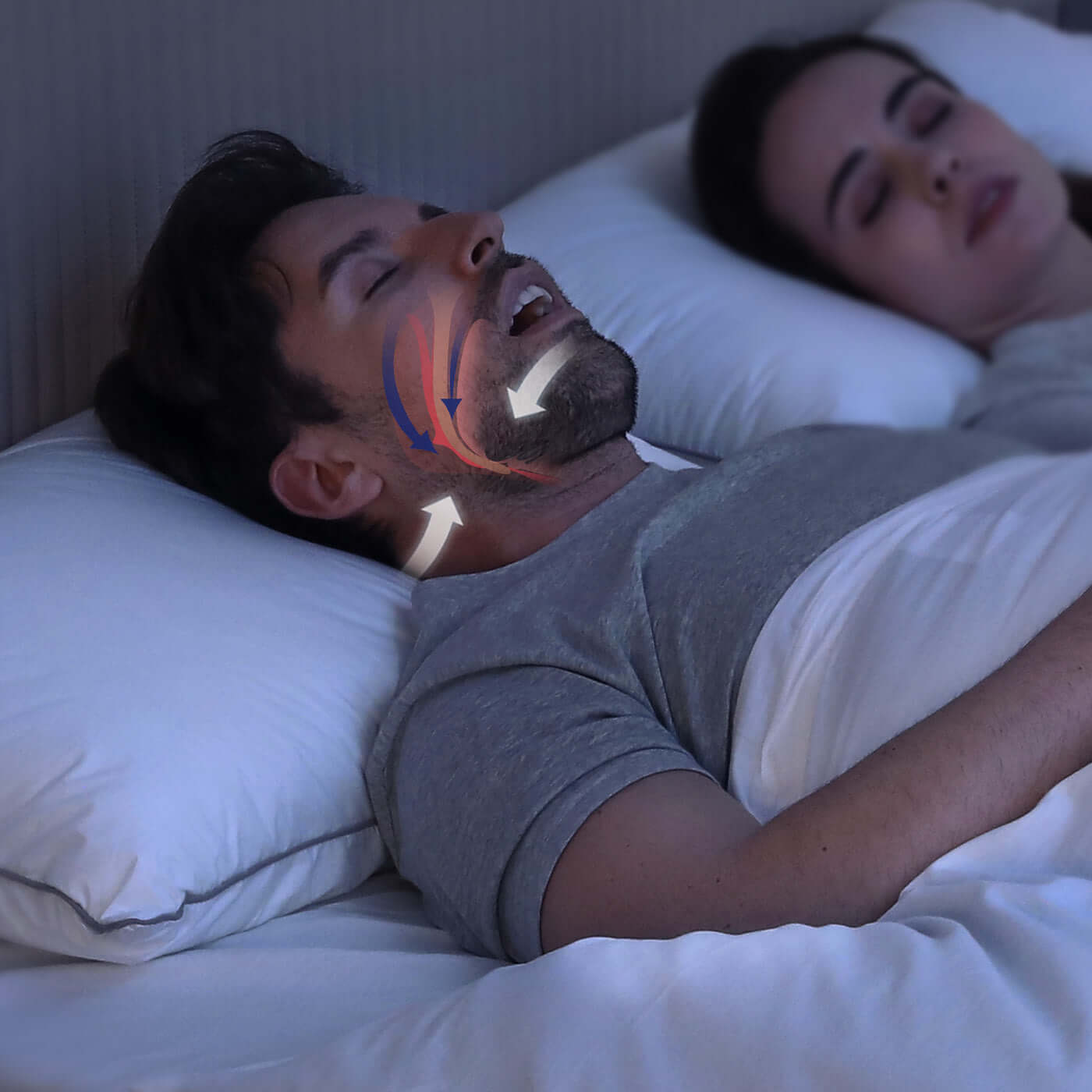
Airway obstructed, snoring starts.
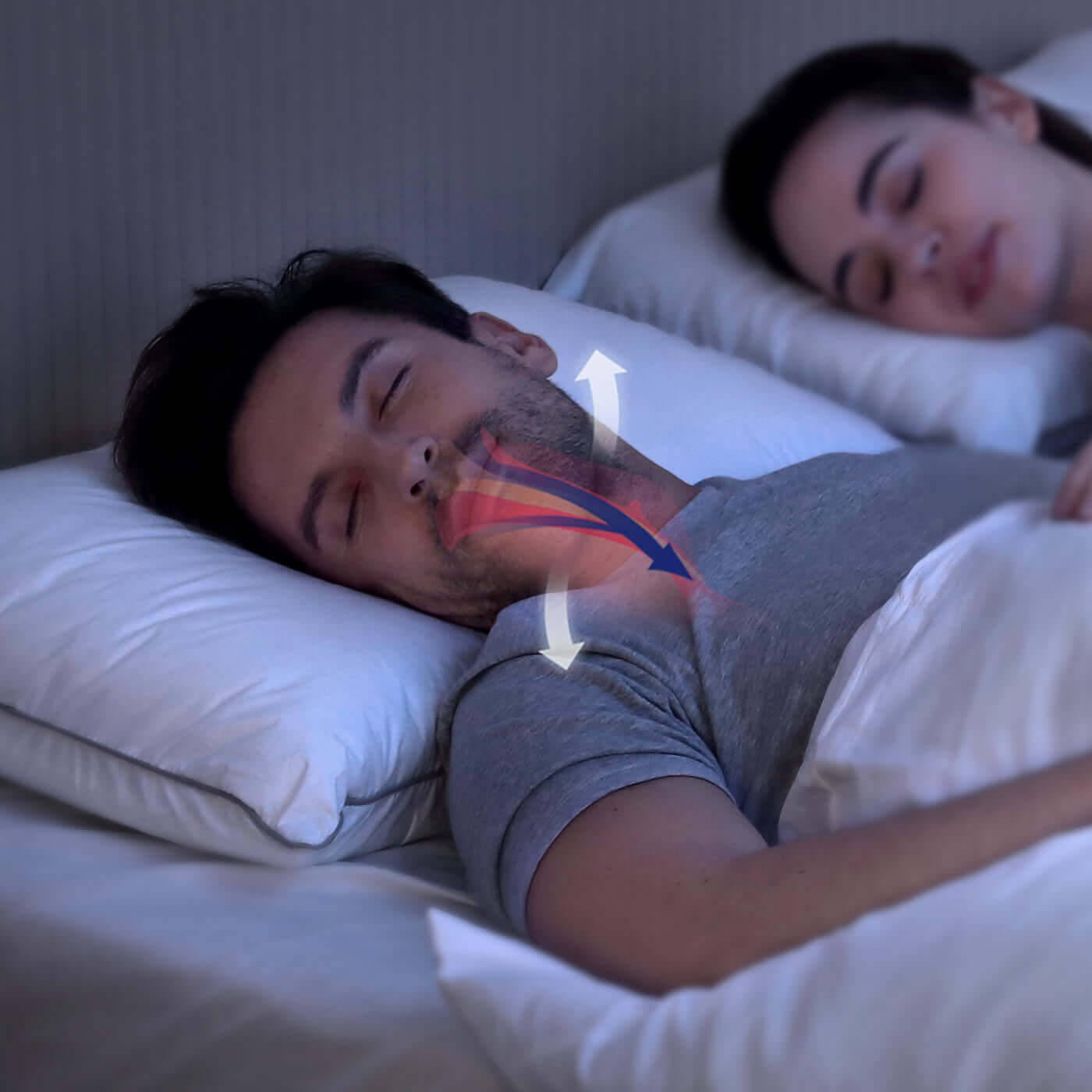
Turn head, open airway, reduce snoring.
"Head Position, separately from trunk position, is an additionally important factor for the occurrence of apnea in obstructive sleep apnea (OSA) patients."
Quantitative Effects of Trunk and Head Position on the Apnea Hypopnea Index in Obstructive Sleep Apnea.
- Ellen R. van Kesteren BSC,Nico de Vries, MD, PhD

"Head Position, separately from trunk position, is an additionally important factor for the occurrence of apnea in obstructive sleep apnea (OSA) patients."
Quantitative Effects of Trunk and Head Position on the Apnea Hypopnea Index in Obstructive Sleep Apnea.
- Ellen R. van Kesteren BSC,Nico de Vries, MD, PhD


"A Quantum Advance in PSG Recordings: The Importance of Head Position in Mediating the AHI."
Commentary on van Kesteren et al. Quantitative effects of trunk and head position on the apnea hypopnea index in obstructive sleep apnea.
- Richard J. Schwab, MD

"A Quantum Advance in PSG Recordings: The Importance of Head Position in Mediating the AHI."
Commentary on van Kesteren et al. Quantitative effects of trunk and head position on the apnea hypopnea index in obstructive sleep apnea.
- Richard J. Schwab, MD
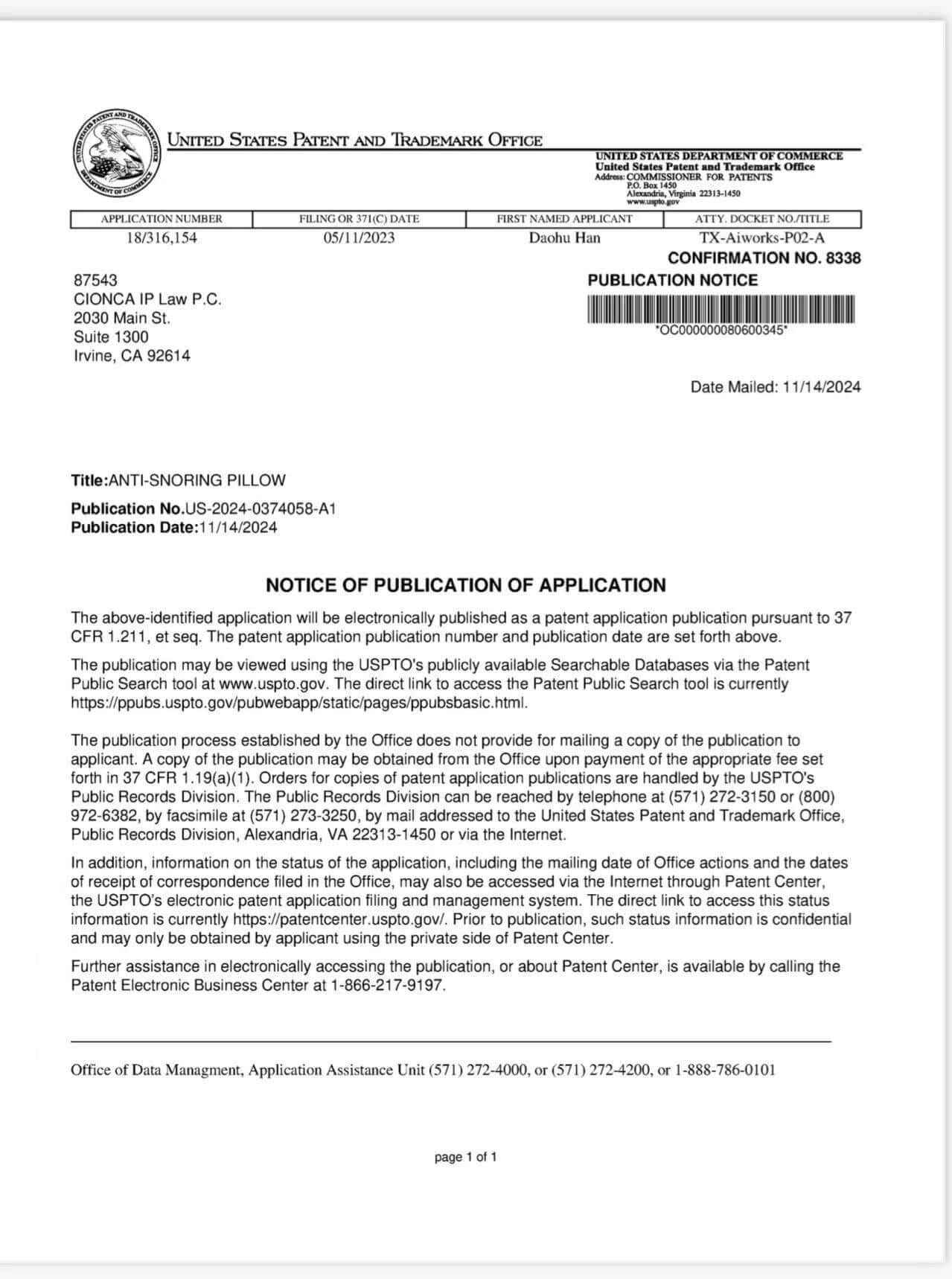
Product Patent Declaration
Based on fundamental principles, experimental research, and clinical data, we have developed a range of anti-snoring products, including various pillow designs. These products have undergone rigorous testing to ensure effectiveness and safety. As a result, we have successfully obtained patents from the USPTO, securing intellectual property rights for our innovative technologies.
Product Patent Declaration
Based on fundamental principles, experimental research, and clinical data, we have developed a range of anti-snoring products, including various pillow designs. These products have undergone rigorous testing to ensure effectiveness and safety. As a result, we have successfully obtained patents from the USPTO, securing intellectual property rights for our innovative technologies.

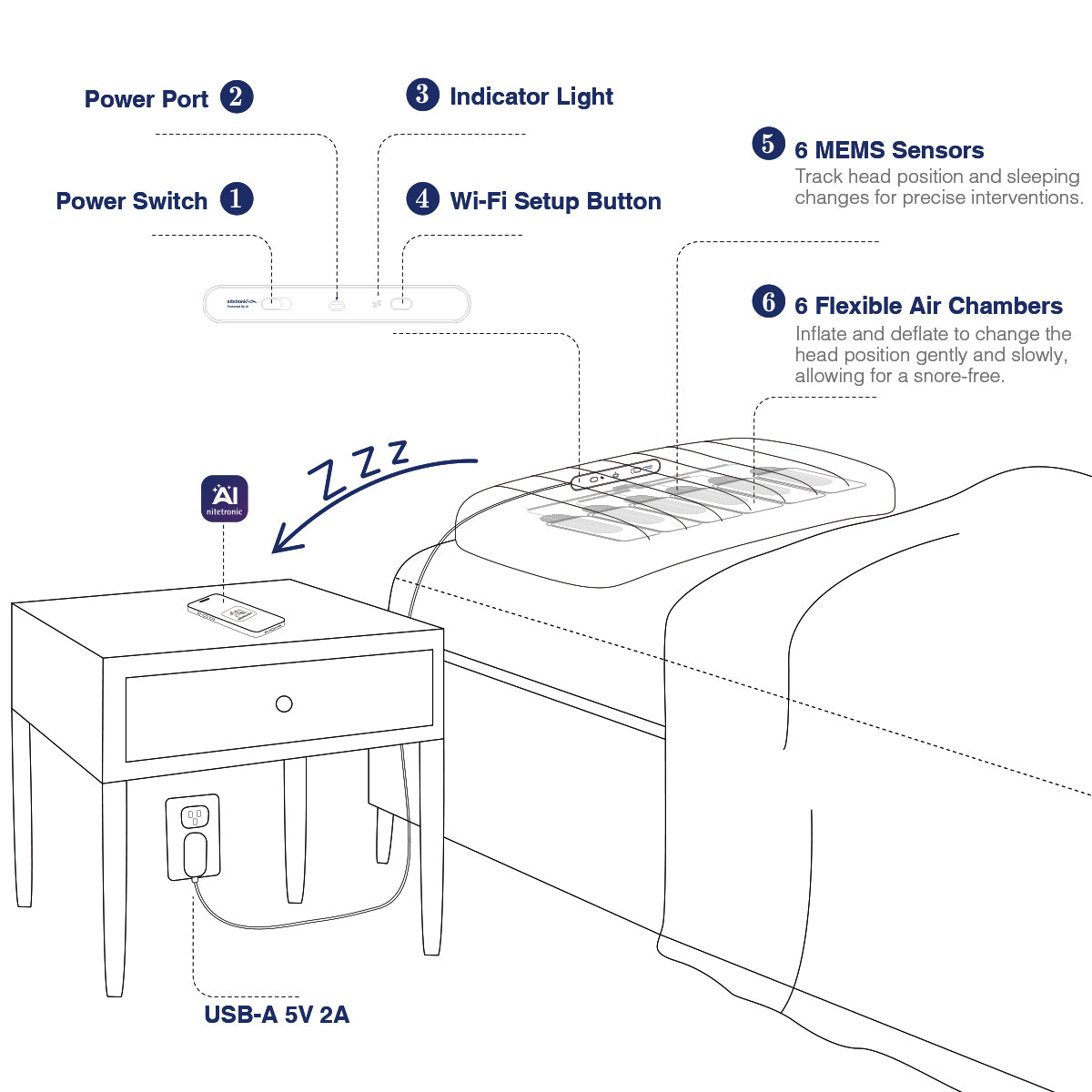
Nitetronic AI Anti-Snore Pillow
The Nitetronic AI Anti-Snore Pillow uses advanced sensors and AI algorithms to monitor your sleep posture and breathing patterns. When it detects snoring or irregular breathing, it automatically adjusts built-in air cushions to promote healthier positions and reduce snoring. Paired with a dedicated app, it provides detailed sleep analytics, helping you personalize your sleep experience for a quieter, more restful night. Combining sleek design with cutting-edge technology, it offers a comfortable and effective solution for better sleep.
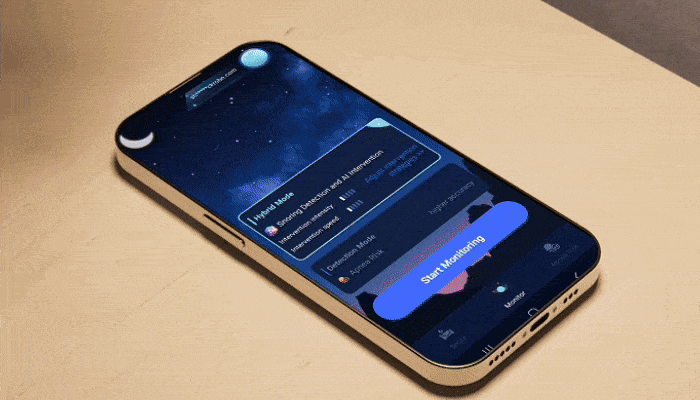
How Nitetronic AI Anti-Snore Pillow Works
Provides dynamic, multi-dimensional AI-driven smart interventions for a personalized anti-snoring experience. It precisely controls the angle of head rotation, airbag lift height, and intervention speed based on your unique characteristics.
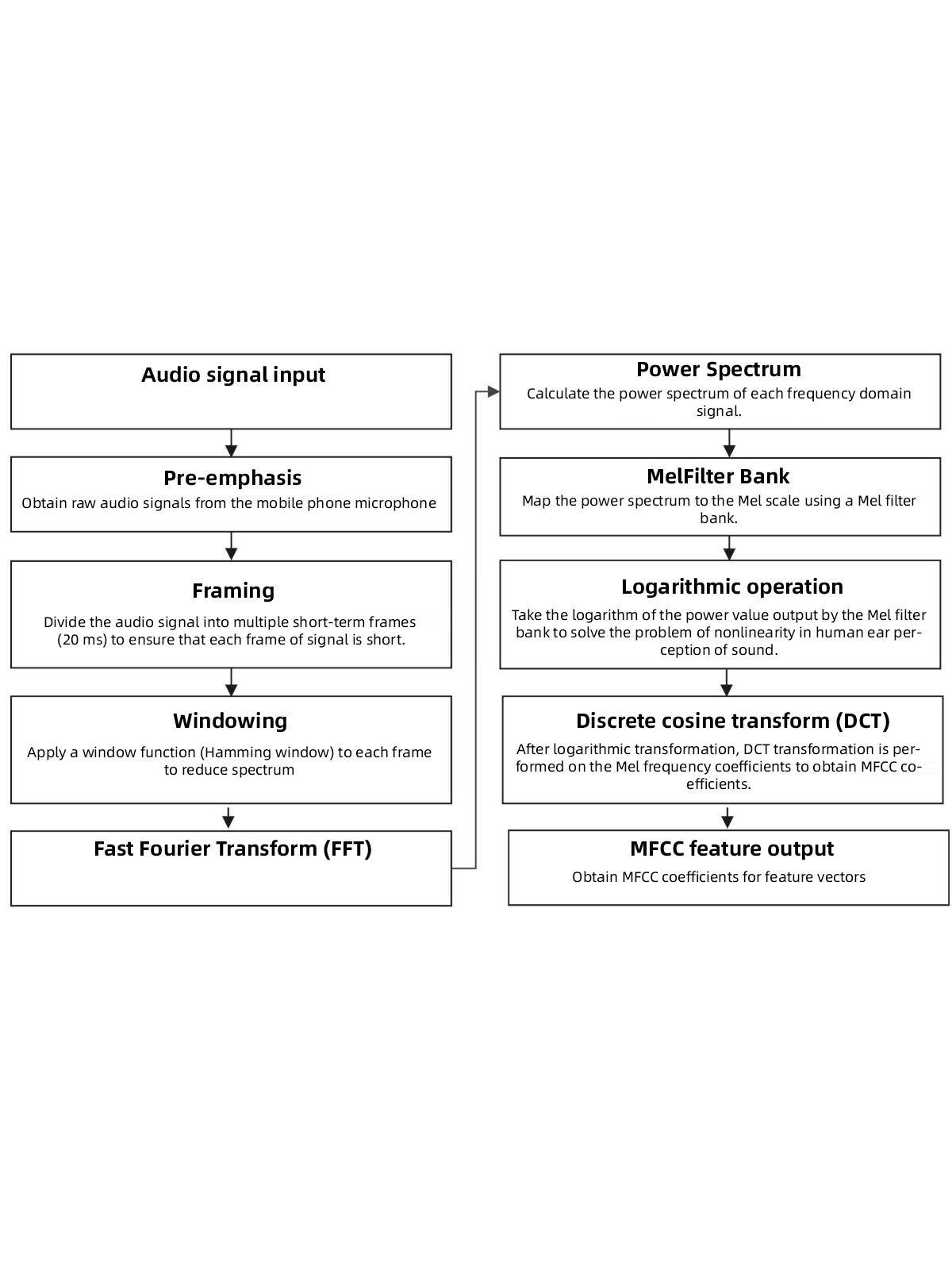
Snoring recognition process
DOI: 10.12677/mos.2025.141090
MFCC snoring recognition algorithm (New Mel-frequency Cepstral Coefficients, MFCC) is a method for extracting spectral features from audio signals. This feature extraction method can effectively capture the time-frequency characteristics of audio signals. In particular, MFCC provides accurate representation of different acoustic patterns in snoring recognition tasks.
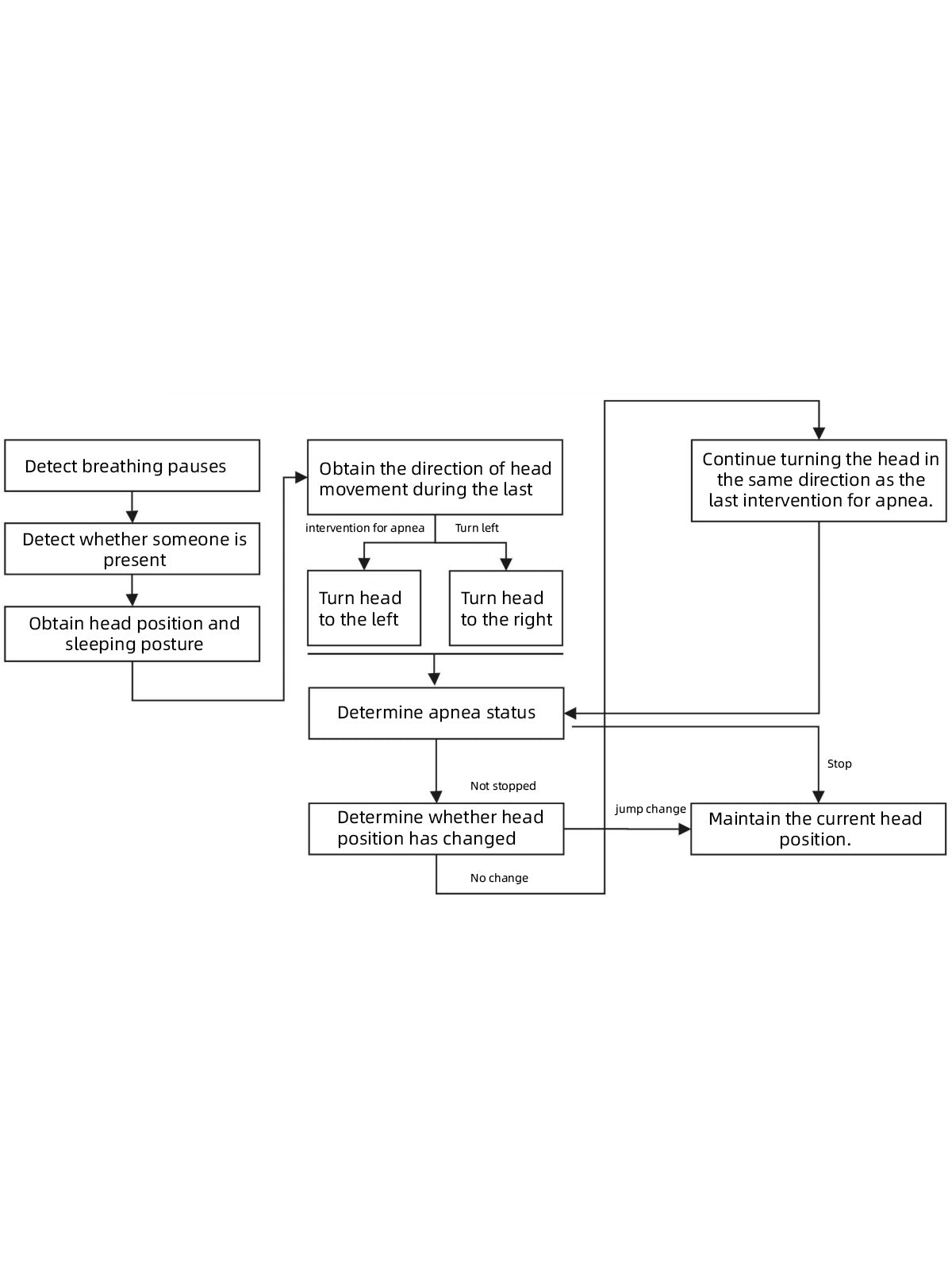
AI Dynamic Intervention Flowchart
DOI: 10.12677/mos.2025.141090
AI variable frequency intervention technology
The CECS sensor detects the pressure exerted by the user on the pillow, calculates the position of the head, and adjusts the intervention strategy in real time.
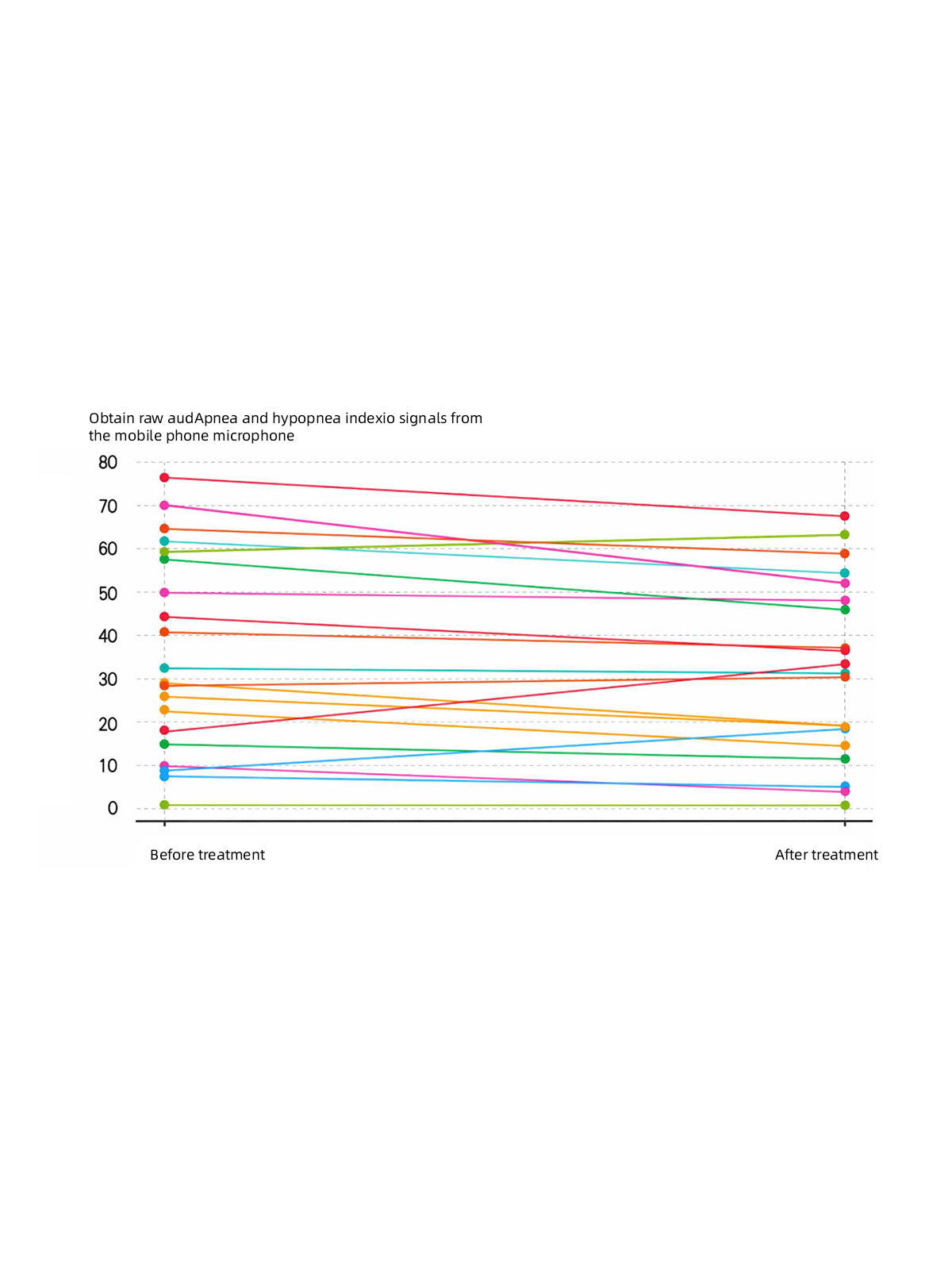
Changes before and after intervention
DOI: 10.12677/mos.2025.141090
Among them, 16 patients showed a significant decrease in AHI, while the other 4 patients did not show significant improvement. The treatment efficacy rate of the position intervention system was 80%.
In particular, patients with more severe symptoms when sleeping in a supine position showed a particularly significant decrease in AHI.
Snoring recognition process
DOI: 10.12677/mos.2025.141090
MFCC snoring recognition algorithm (New Mel-frequency Cepstral Coefficients, MFCC) is a method for extracting spectral features from audio signals. This feature extraction method can effectively capture the time-frequency characteristics of audio signals. In particular, MFCC provides accurate representation of different acoustic patterns in snoring recognition tasks.
AI Dynamic Intervention Flowchart
DOI: 10.12677/mos.2025.141090
AI variable frequency intervention technology
The CECS sensor detects the pressure exerted by the user on the pillow, calculates the position of the head, and adjusts the intervention strategy in real time.
Changes before and after intervention
DOI: 10.12677/mos.2025.141090
Among them, 16 patients showed a significant decrease in AHI, while the other 4 patients did not show significant improvement. The treatment efficacy rate of the position intervention system was 80%.
In particular, patients with more severe symptoms when sleeping in a supine position showed a particularly significant decrease in AHI.



Real-Time Al Monitoring for Personalized Precision
It continuously adapts, delivering real-time monitoring and customized adjustments tailored to individual needs for optimal effectiveness.
99%
Precision Snore Detection, unfazed by Noise, with 99% accuracy
80%
Dual Intervention System for Snoring Relief Utilizing Al-driven adjustments
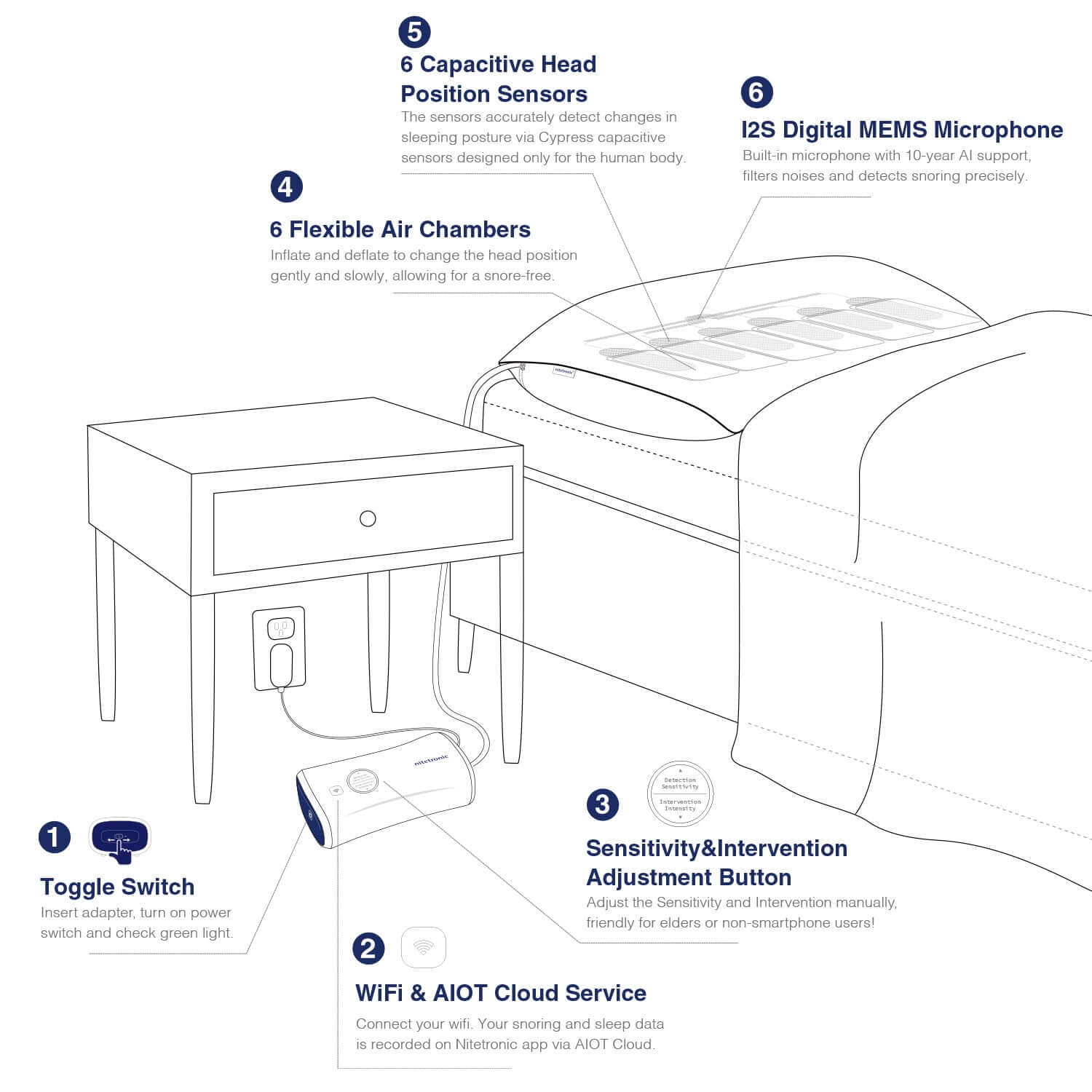
Nitetronic Smart Anti-Snore Pillow
Nitetronic Smart Anti Snore Pillow is equipped with MEMS sensors to monitor snoring and 6 flexible air chambers and 6 inductive position sensors to guide the head into a side-sleeping position. With advanced noise reduction and 10 years of AI algorithm validation, you will enjoy a snore-free and peaceful sleep.
How Nitetronic Smart Anti-Snore Pillow Works
Snoring Detected
Head Position Detected
Airbag Inflated
Turn the Head to the Side Gently
Airway Cleared
Snoring Intervened
Clinical Studies
Clinical trials at the University ENT Clinic Mannheim in Germany have shown that using the Nitetronic Smart Anti-Snore Pillow can reduce or eliminate snoring by approximately 67%.
40%
reduction in mild to moderate OSA-AHI
67%
reduction in snore time with snoring pillow
50%
reduction in AHI in posture-dependent patients
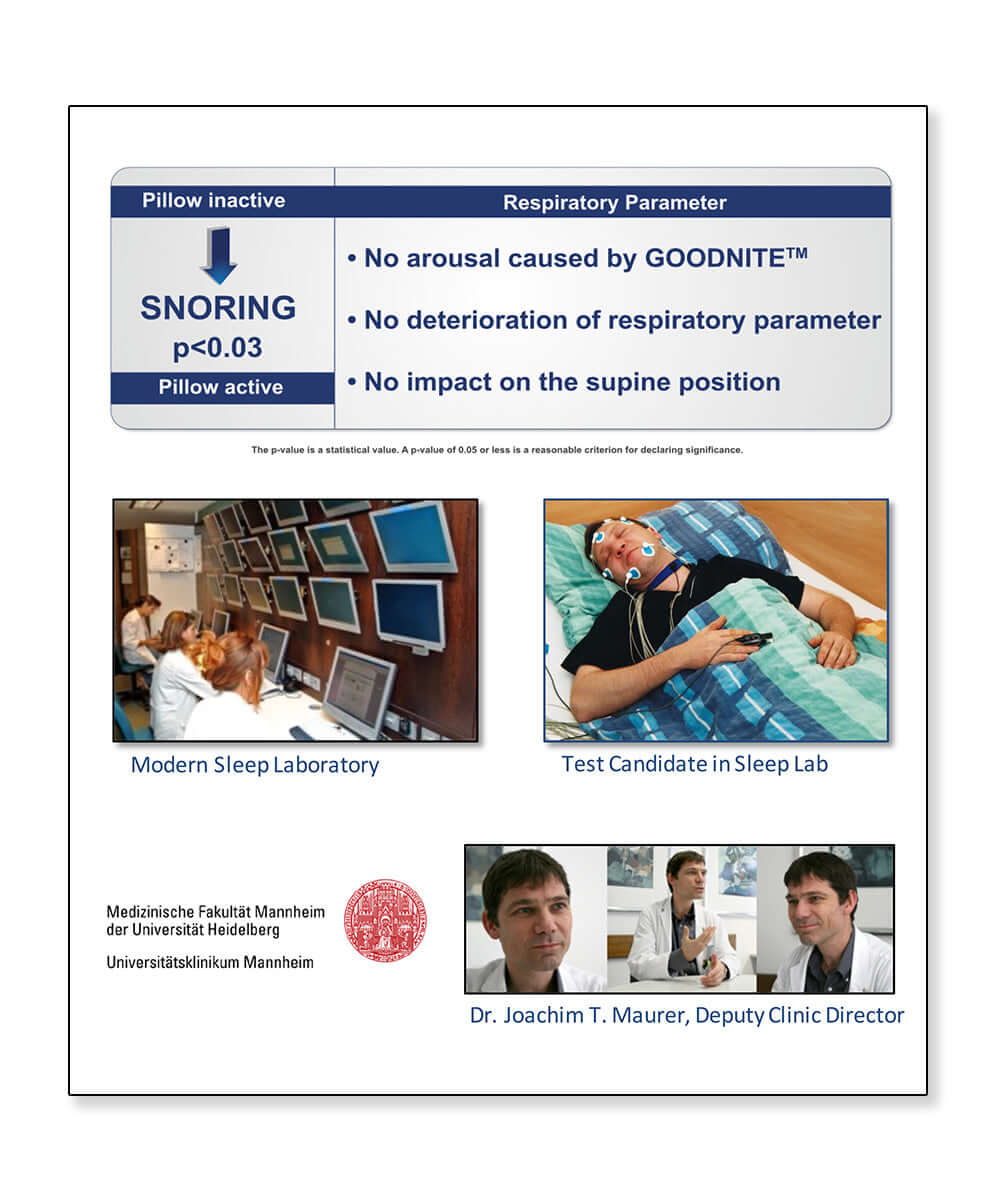
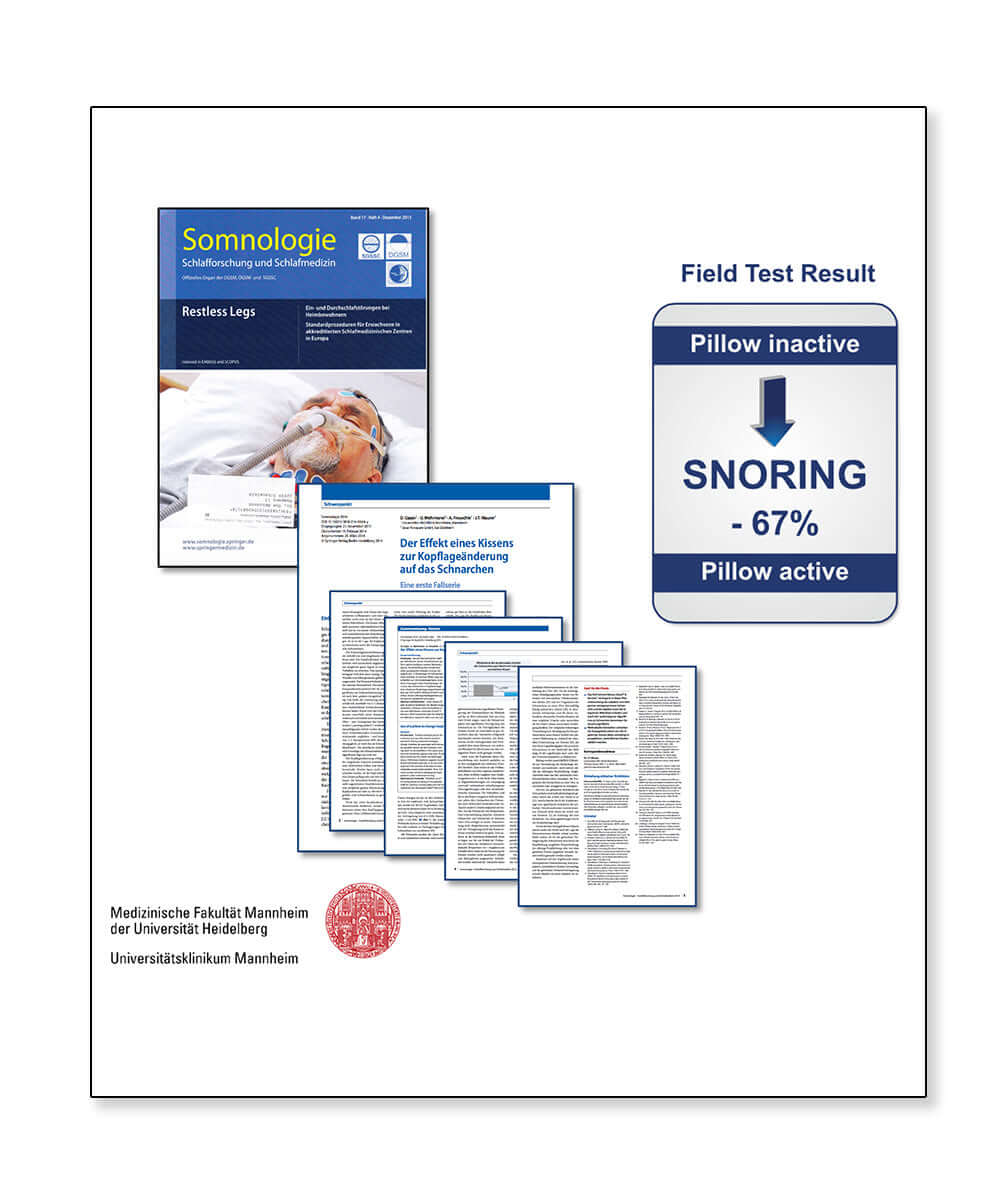
Test of German users (2013)
Field Test Description
In a study of 157 participants (142 men and 15 women; average age 54±9.6 years), a significant reduction in snoring was observed. The amount of snoring time during the total recording time with the pillow deactivated decreased from an average of 48±17% to 16±9% when the pillow was activated, which represents an improvement of 67±14%.
ENT Clinic Of Mannheim, Heidelberg University, Germany (2014)
Clinical Research Description
The study sample consisted of 22 test subjects (4 ♀, 18 ♂), aged 18-78 years, with BMI ≤ 30 kg/㎡, two of whom withdrew from the test for personal reasons, leaving 20 subjects. 14 days of continuous observation, the first 7 days of inactivation and the last 7 days of activation of the stop-snoring function. The lower the score, the less the snoring.
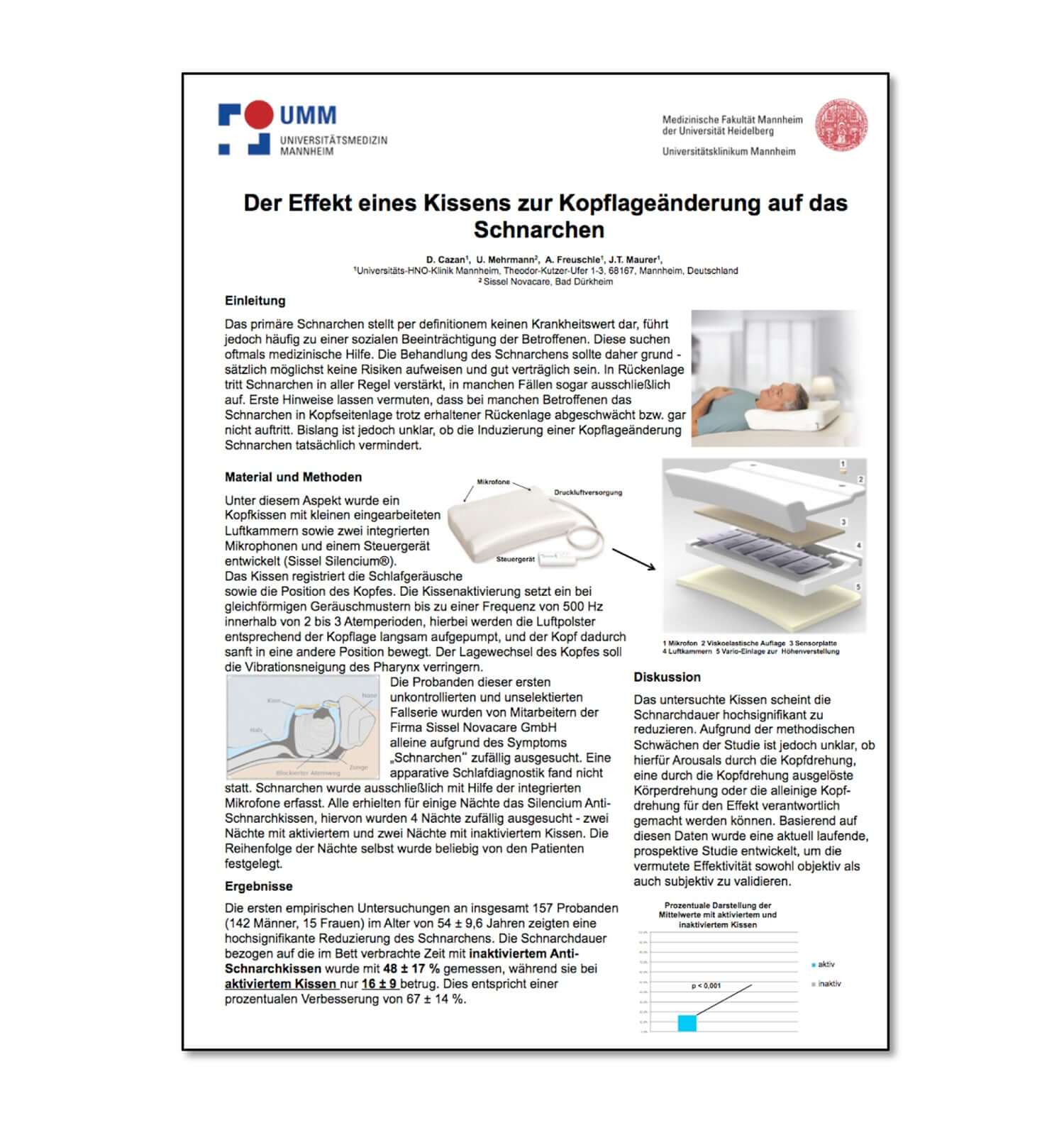
67% Reduction in Snoring on Average
Test of German users (2013)
- Number of people tested: 157.
- The environment for testing: home.
- People use Nitetronic pillows for 2 nights and do not use Nitetronic pillows for 2 nights.
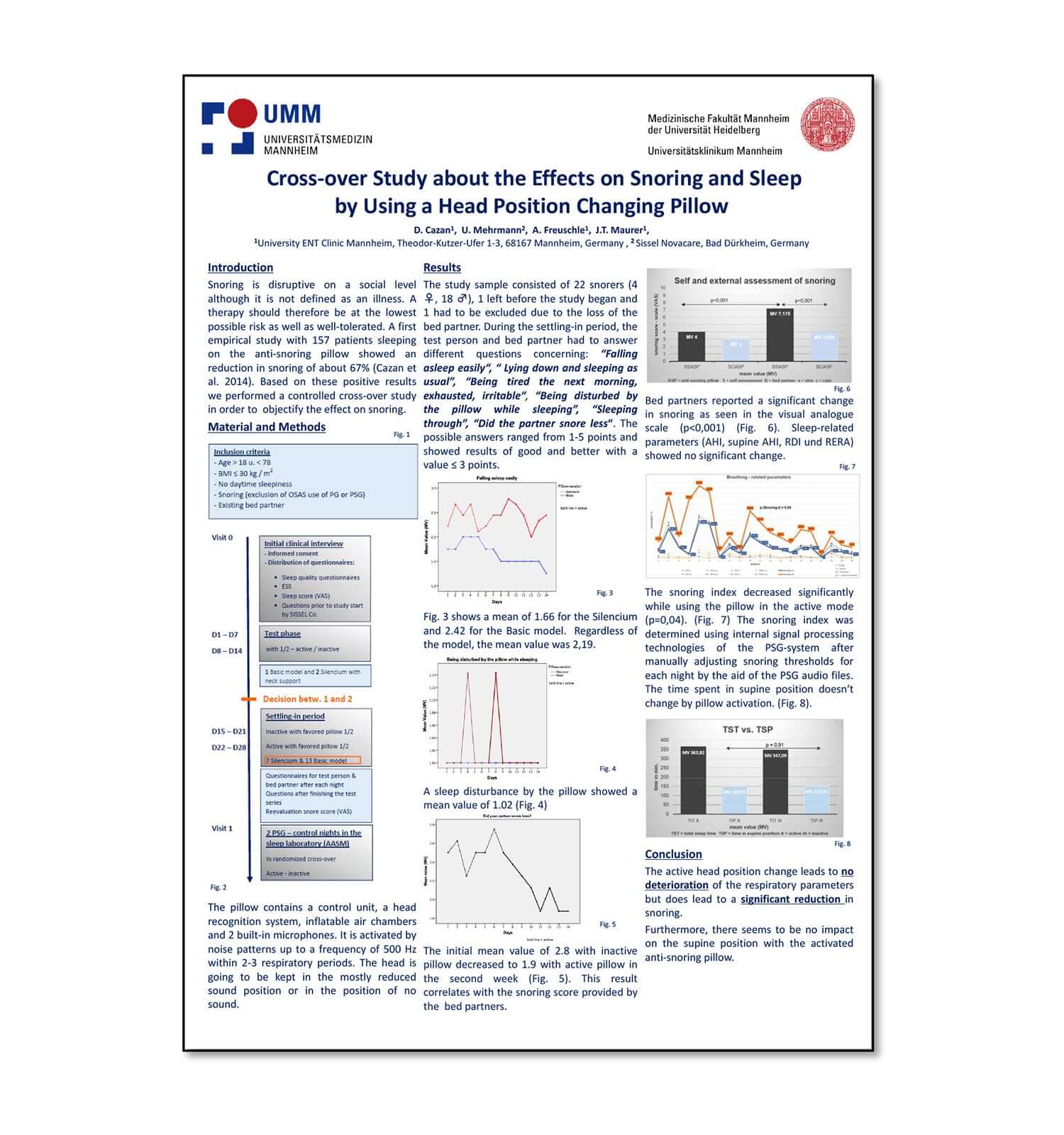
Significantly Rduced Snoring P < 0.03
ENT Clinic Of Mannheim, Heidelberg University, Germany (2014)
- Don't cause microarousal.
- Don't cause poor sleep parameters.
- Don't change the sleeping position on the back.
67% Reduction in Snoring on Average
Test of German users (2013)
- Number of people tested: 157.
- The environment for testing: home.
- People use Nitetronic pillows for 2 nights and do not use Nitetronic pillows for 2 nights.
Significantly Rduced Snoring P < 0.03
ENT Clinic Of Mannheim, Heidelberg University, Germany (2014)
- Don't cause microarousal.
- Don't cause poor sleep parameters.
- Don't change the sleeping position on the back.


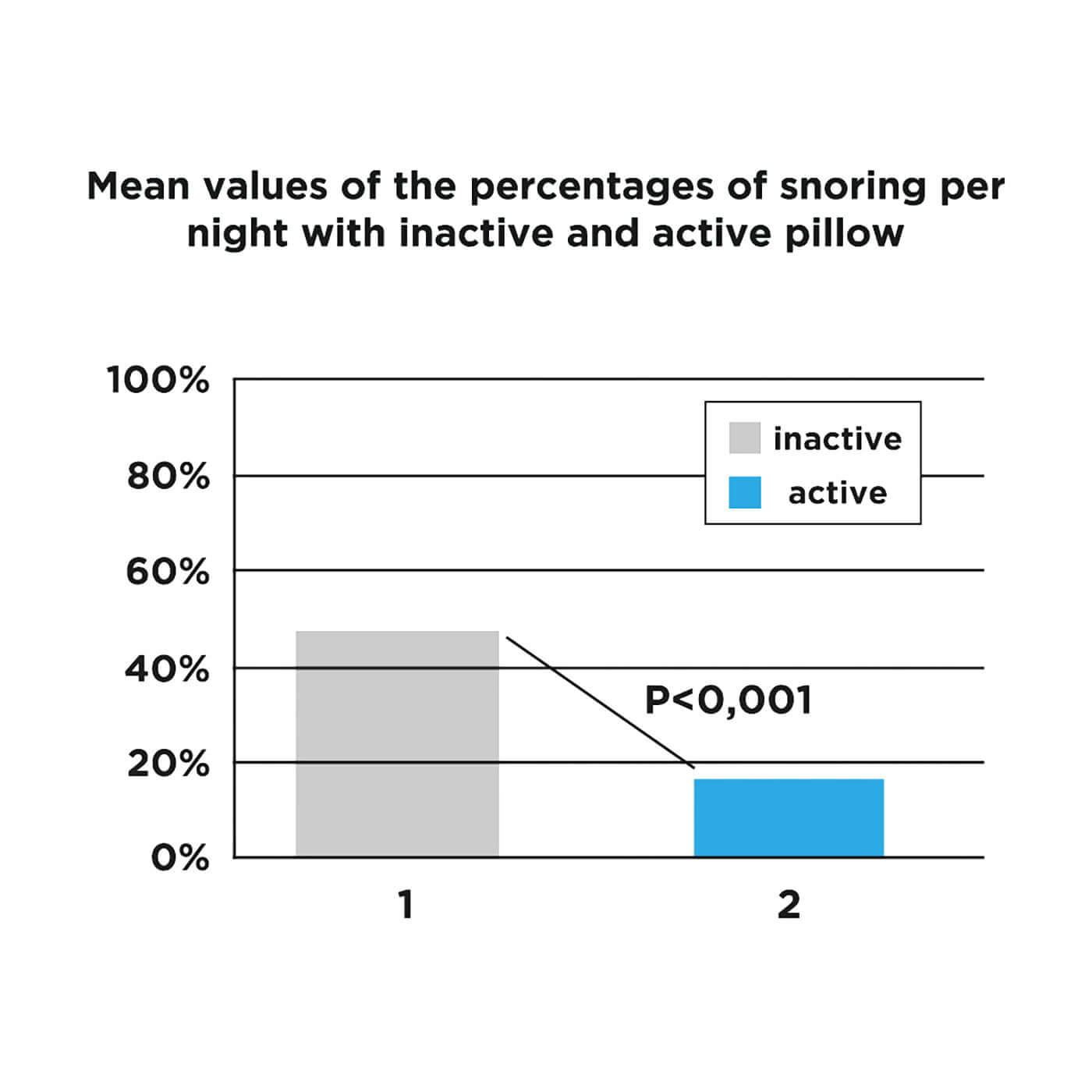
Pillow Activation Experiment
Activated anti-snore pillow reduces snoring by 67±13.9% (p<0.01) compared to 48±16.7% when inactive.
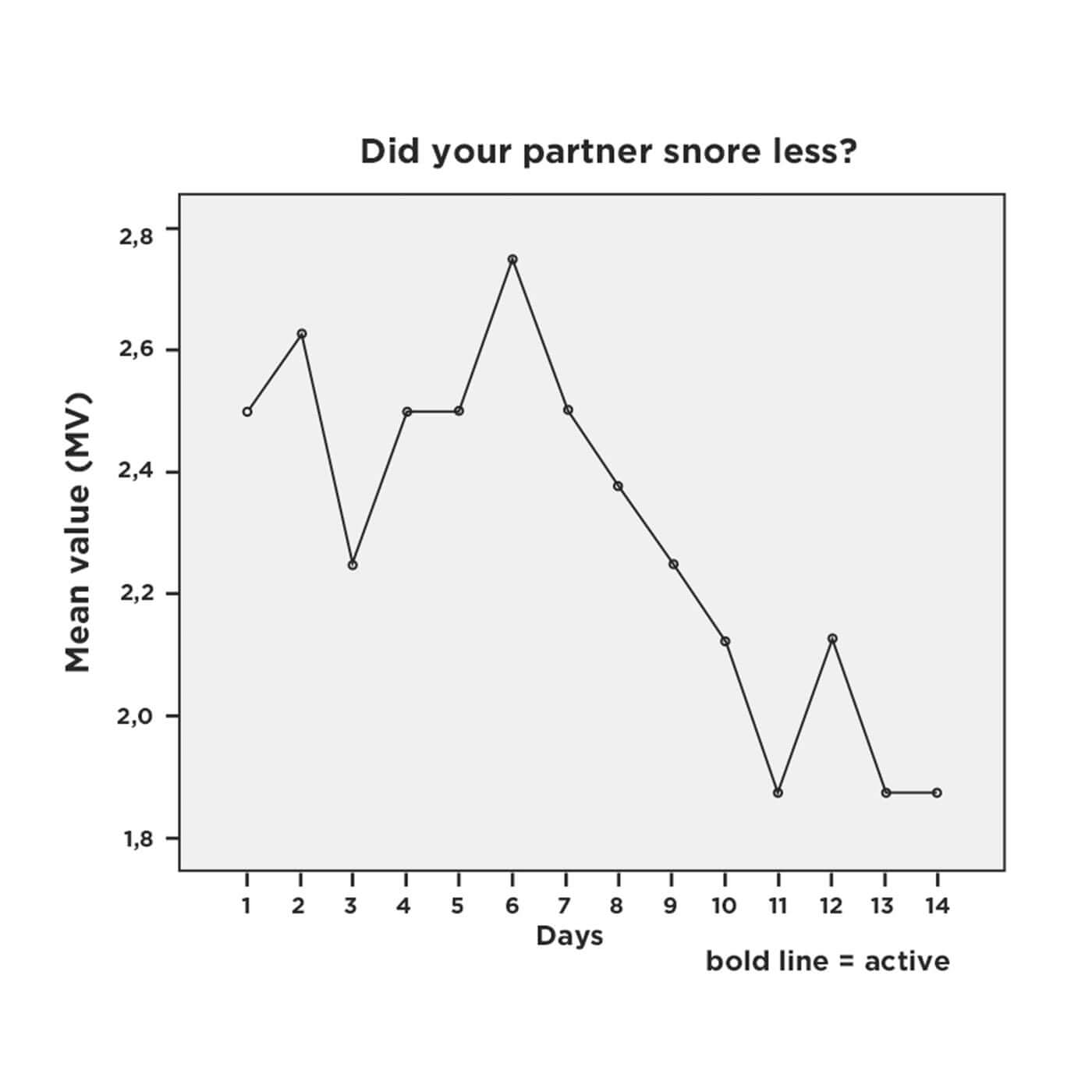
Bedmate Questionnaire Survey
After using the anti-snoring function, the snoring of bedmates significantly decreased, with the average decreasing from 2.8 to 1.9.
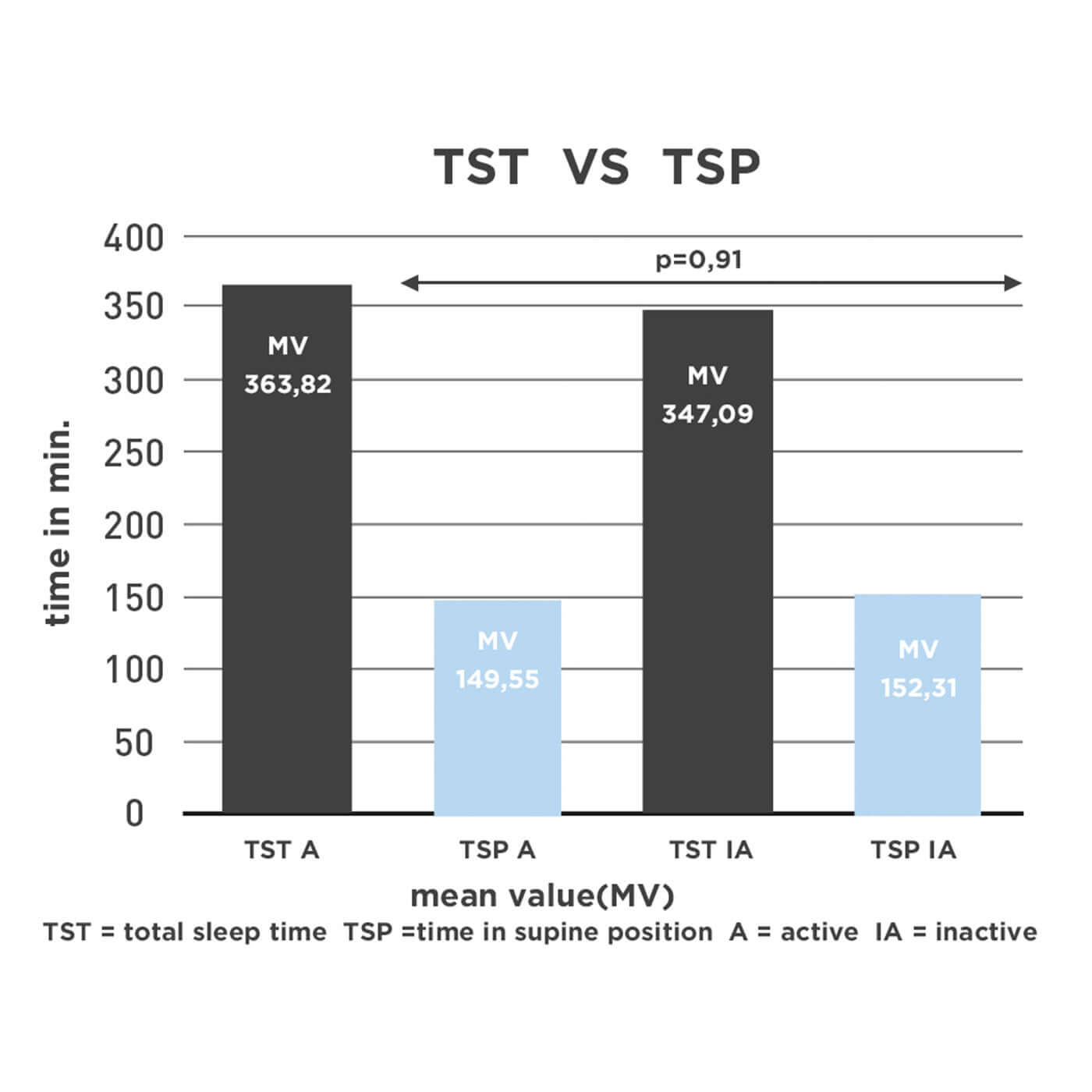
Bedmate and Self-evaluation
The bedmate evaluation scale shows that snoring significantly decreased after using the anti-snoring function (p<0.001).
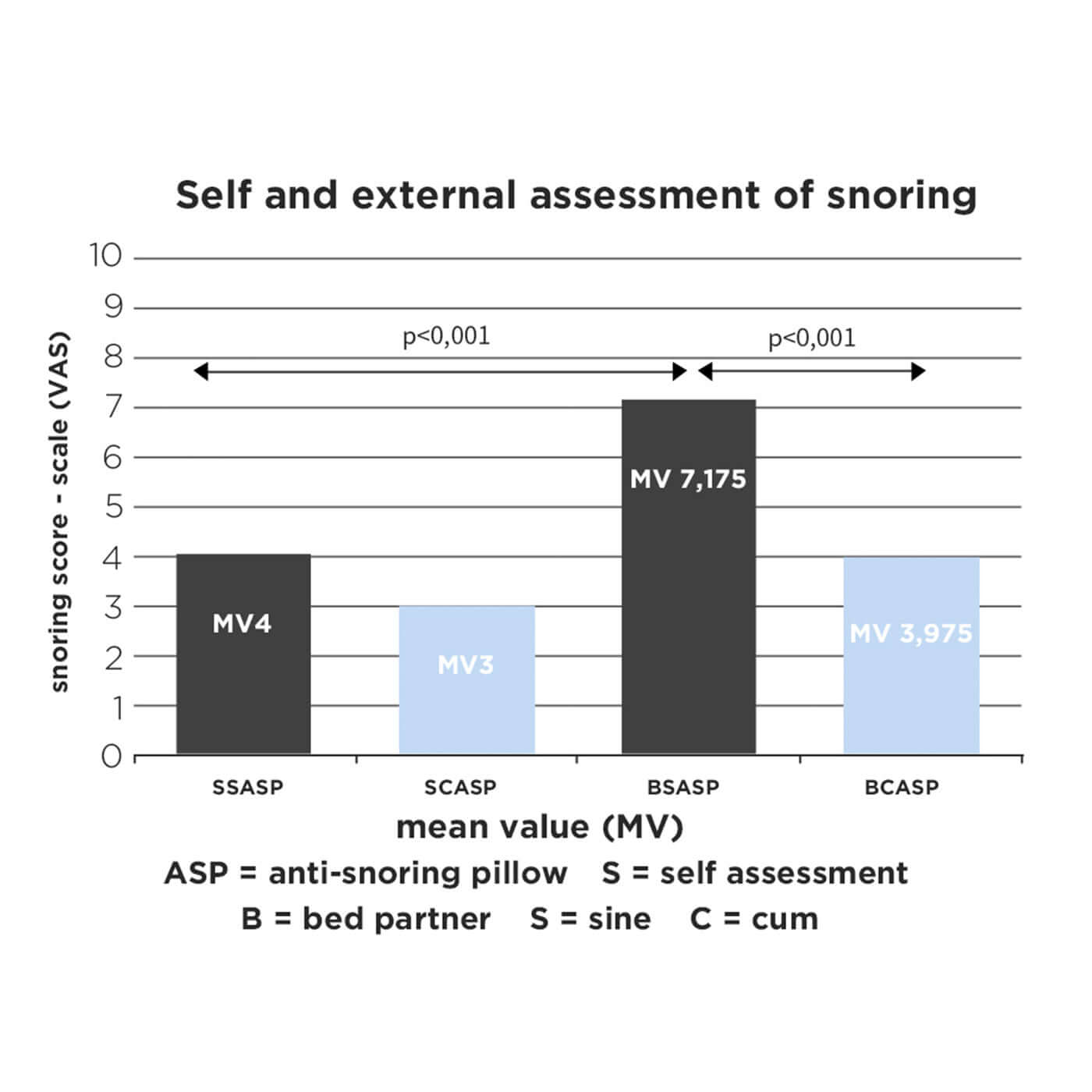
Sleep Posture Impact
The anti-snoring function does not cause changes in the (whole-body) sleep posture, only the head movement.
A Cost-Effective Snoring Solution - Side-Sleeping Anti-Snore Pillow
Side-Sleeping Anti-snoring Pillow, with unique ergonomic central spine design, can keep the head naturally tilted during sleep, without the need to intentionally sleep on the side or other people to promote the turn over, effectively intervene in the supine sleep for side sleeping position, smooth oropharyngeal airway, reduce airway resistance, relieve insufficient ventilation and reduce snoring.

Smart Anti-Snore Pillow

AI Anti-Snore Pillow

Side-Sleeping Anti-Snore Pillow
Frequently Asked Questions
Check out the questions that our customers typically have. Still have questions? Contact our customer support team for further assistance.
How do I choose the right anti-snore pillow for me?
You can take our snoring quiz to help you choose the most suitable pillow. Please complete the quiz, and we will provide personalized recommendations based on your sleeping position, cause of snoring, risk of sleep apnea, and personal preferences.
What is the core working principle of the Nitetronic anti-snore pillow?
By using AI dynamic intervention and multi-sensor technology to monitor head position in real time, and adjusting the height of the airbag, intervention speed, and head rotation angle to guide users to maintain a favorable sleeping posture, combined with sleep data analysis to improve sleep quality and safety.
How does it monitor sleep and head position?
The pillow has a built-in MEMS sensor, six air chambers, and position sensors to monitor head position, airbag status, and sleep-related data, which is then analyzed using a dedicated app.
What specific aspects does AI dynamic intervention cover?
Real-time adjustment of head rotation angle, airbag lift height, and intervention speed to achieve a personalized anti-snoring solution.
What are the advantages of this pillow compared to traditional anti-snoring devices?
Compared to traditional invasive tools, this pillow provides personalized intervention through a non-invasive method, focusing on sleep comfort and data-driven optimization to reduce snoring and improve sleep quality.
Are there any clinical studies supporting its effectiveness?
Yes, clinical studies have shown that using this pillow significantly reduces snoring and improves certain sleep parameters; an assessment conducted in Mannheim, Germany, showed an average reduction in snoring of approximately 67%.
Will it work for stomach sleepers?
The pillow stops snoring by adjusting the position of your head, opening your airway, and clearing the airway. So even for stomach sleepers, it can also smartly adjust head position to help widen your airway. For stomach sleepers, it may not make big difference in stopping snoring, but can improve the oxygen intake to guarantee you a better and safer sleep.
Does this work if one snores when sleeping on one's side?
If you snore when sleeping on your side, the effect may not be significant . But it still works because the pillow will keep pushing to adjust your sleeping position until it can find a better head position.
Is this pillow suitable for someone who have sleep apnea?
Nitetronic pillow have been medically proven to be effective in reducing snoring. They are both designed to alleviate sleep apnea symptoms, but they have not been proven to be a treatment for the condition. CAPA is one of the methods used to treat sleep apnea. Please let us know if you have any further questions or concerns.
What should I do if I feel the height of pillow is too low or high?
There are 2 add-ons in the pillow to adjust the height of the pillow. You can remove one if it is too high for you or add one if it is low for you.
Putting other items on the anti-snore pillow is not recommended, which will affect the effect of head position detection and air chamber.
What's the difference between Z6 and Z1?
Compared with Nitetronic Z1, Nitetronic Z6 has a lot of upgrades:
- Add buttons on the control box of Z6. You can adjust the snoring detection sensitivity and intervention intensity with the buttons. It can be used easier by older people;
- Redesign the style and upgrade the brand's tonality.
- Upgrade noise reduction technology to give you more comfortable sleep.
- Optimize the AI algorithm, and the effect of snoring detection and snoring intervention gets better.
What are the age requirements and usage restrictions for this pillow?
Suitable for non-CNS-related snorers; not suitable for anyone under 18. Patients with intracranial electrodes or heart pacemakers should consult a doctor before use, and OSAS (obstructive sleep apnea syndrome) patients should seek medical evaluation prior to use.

